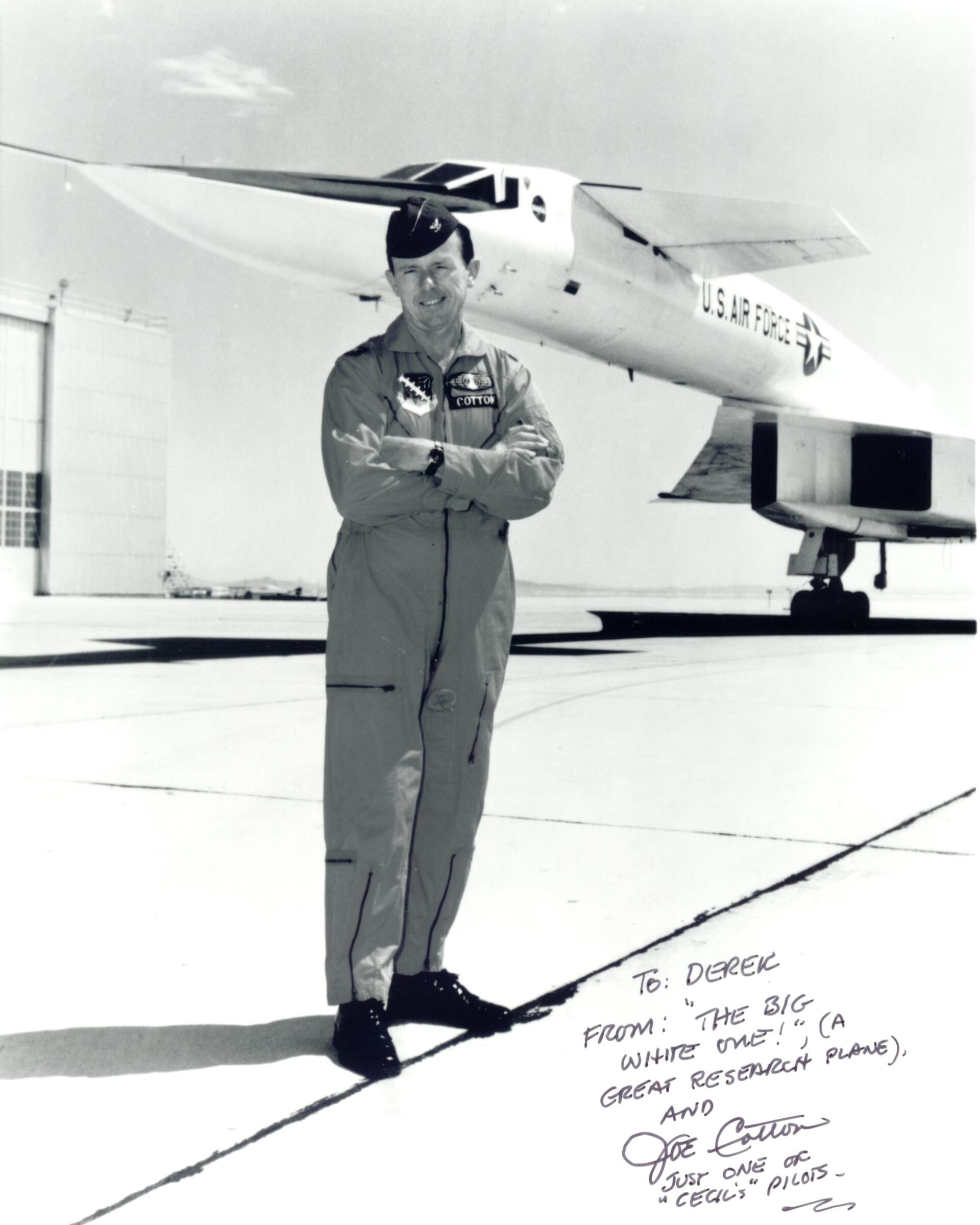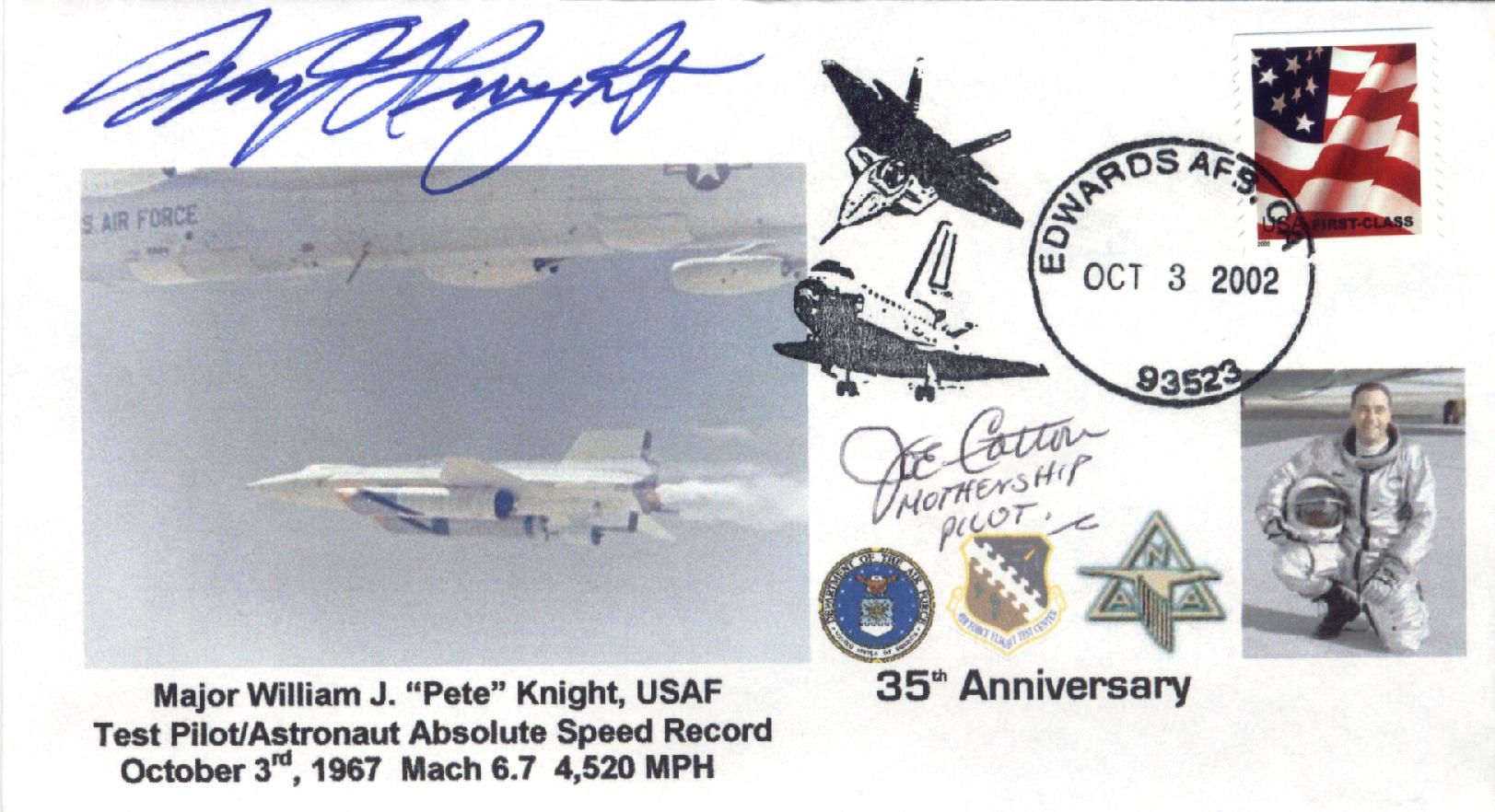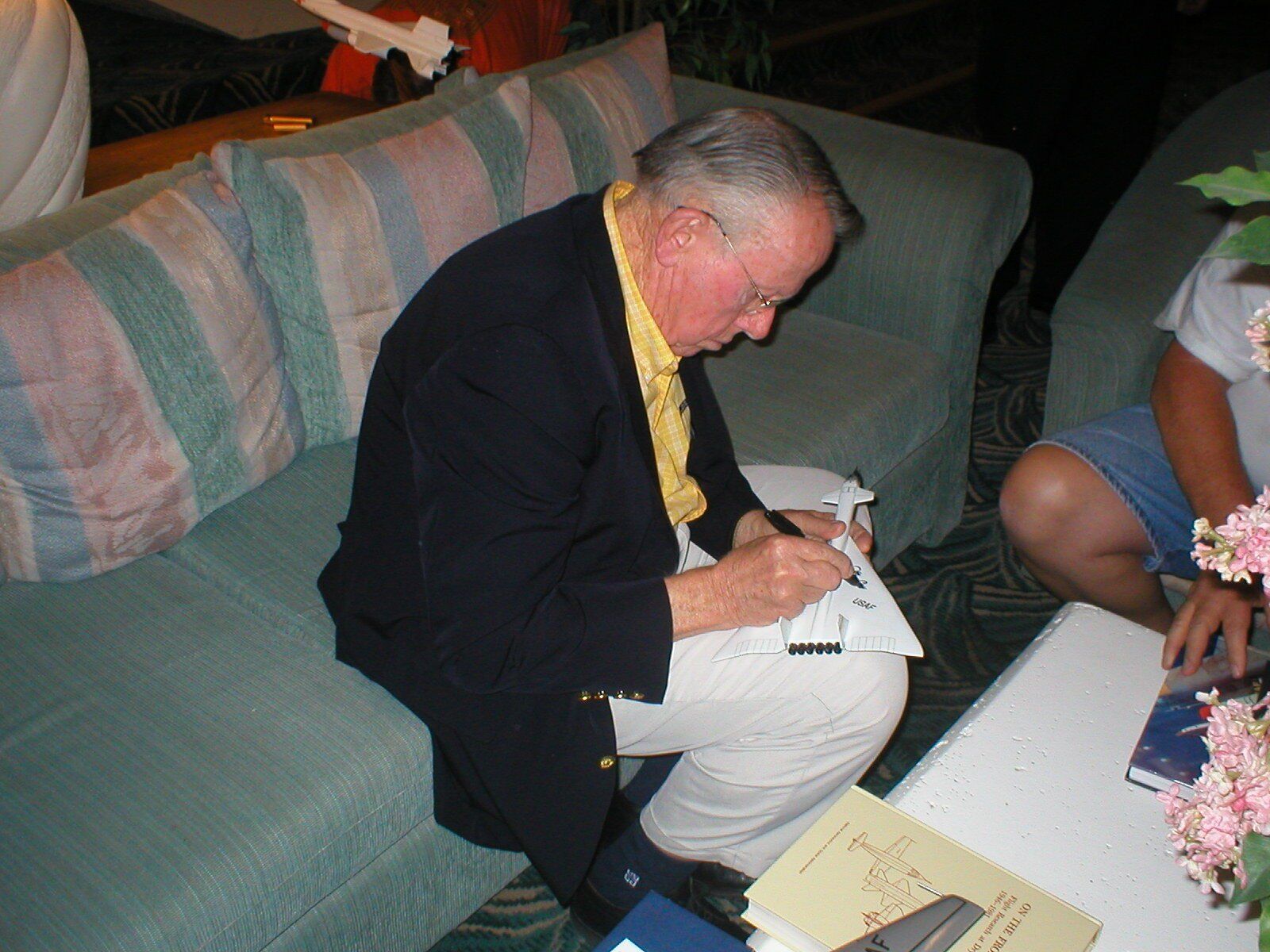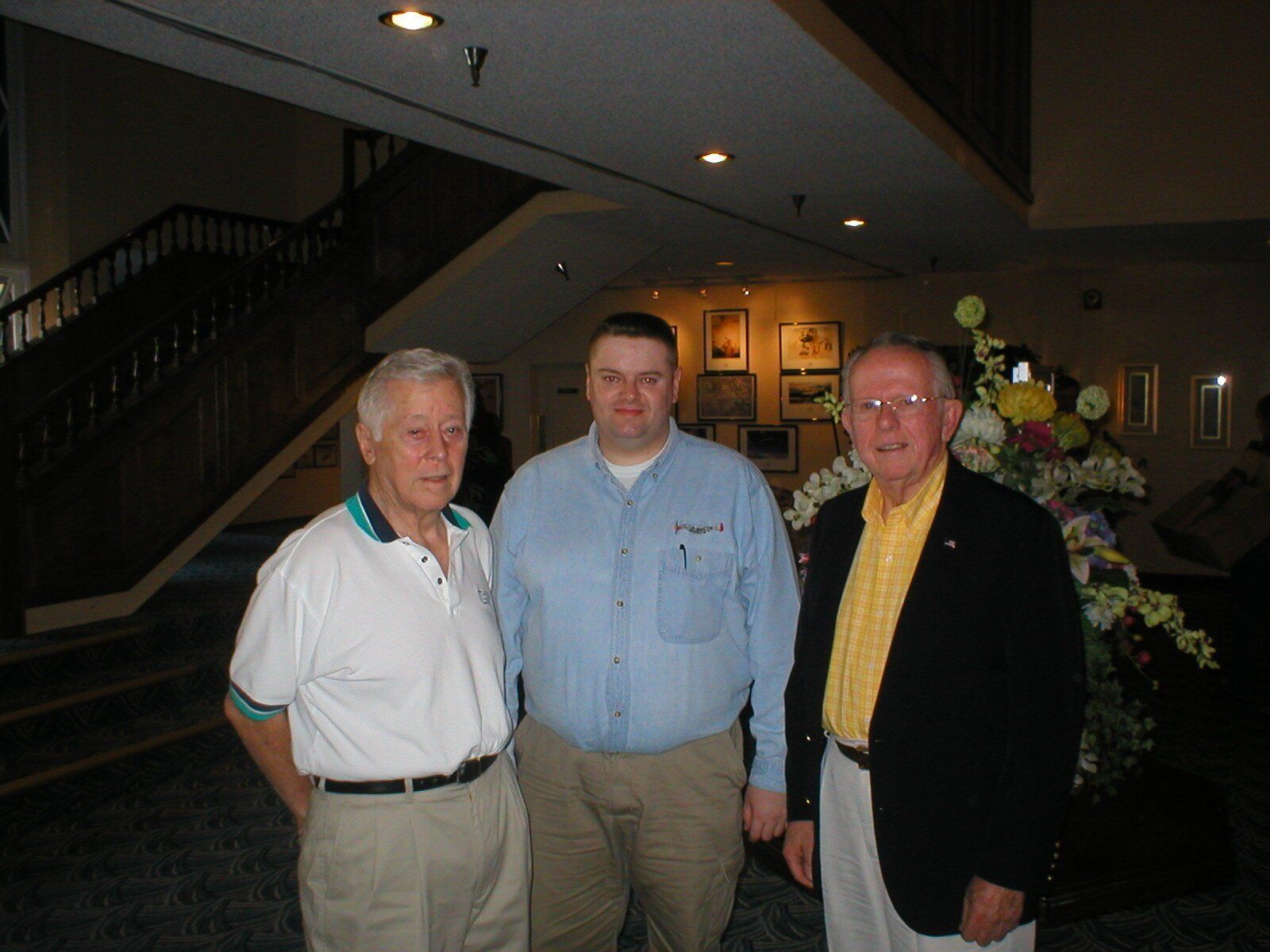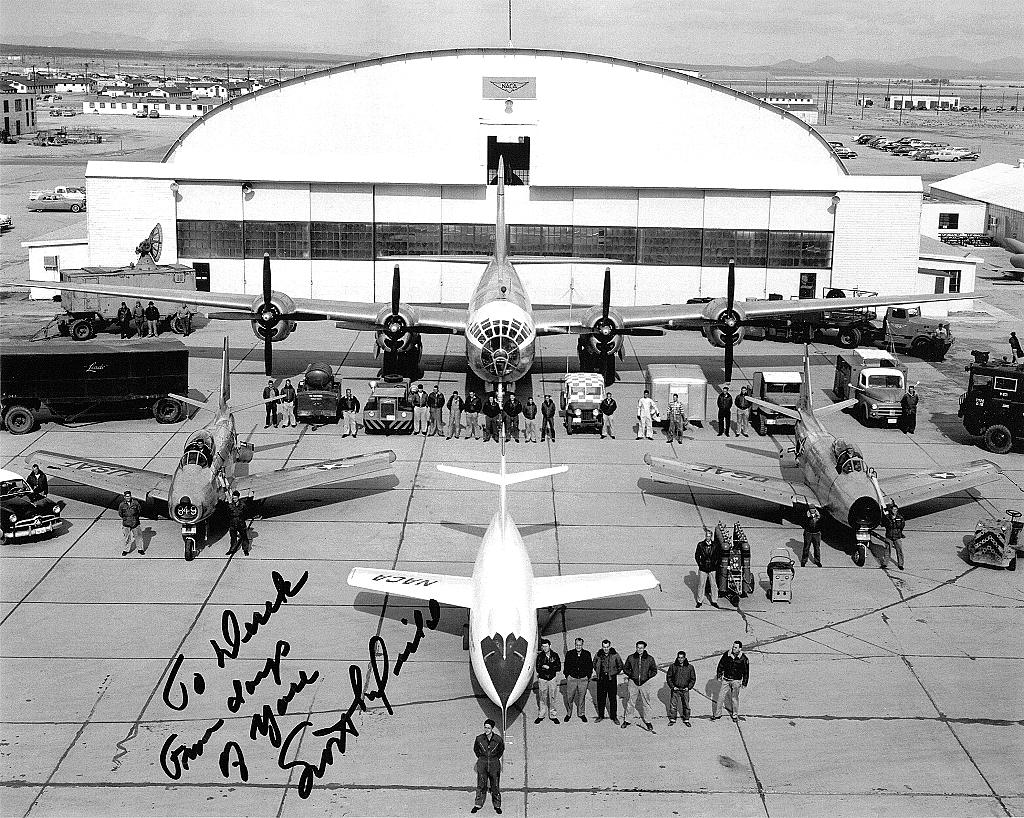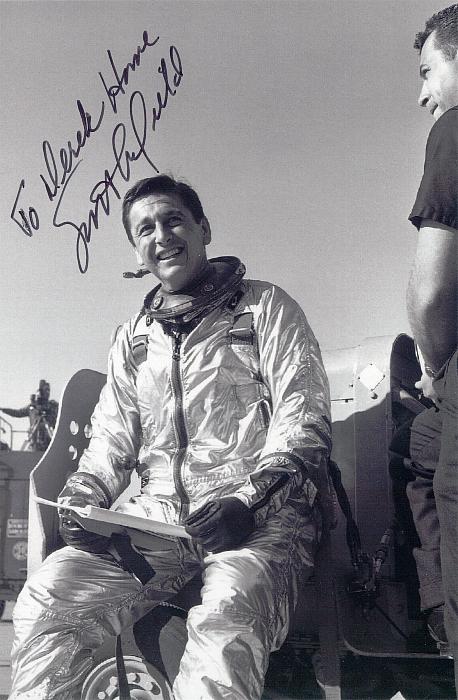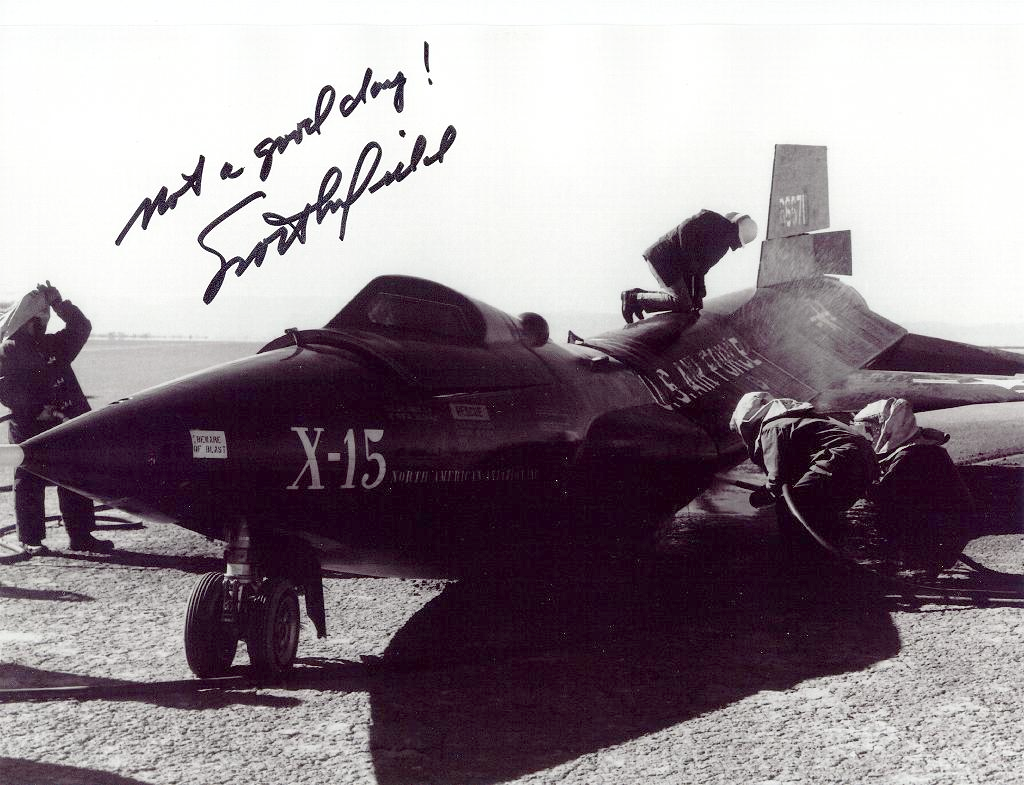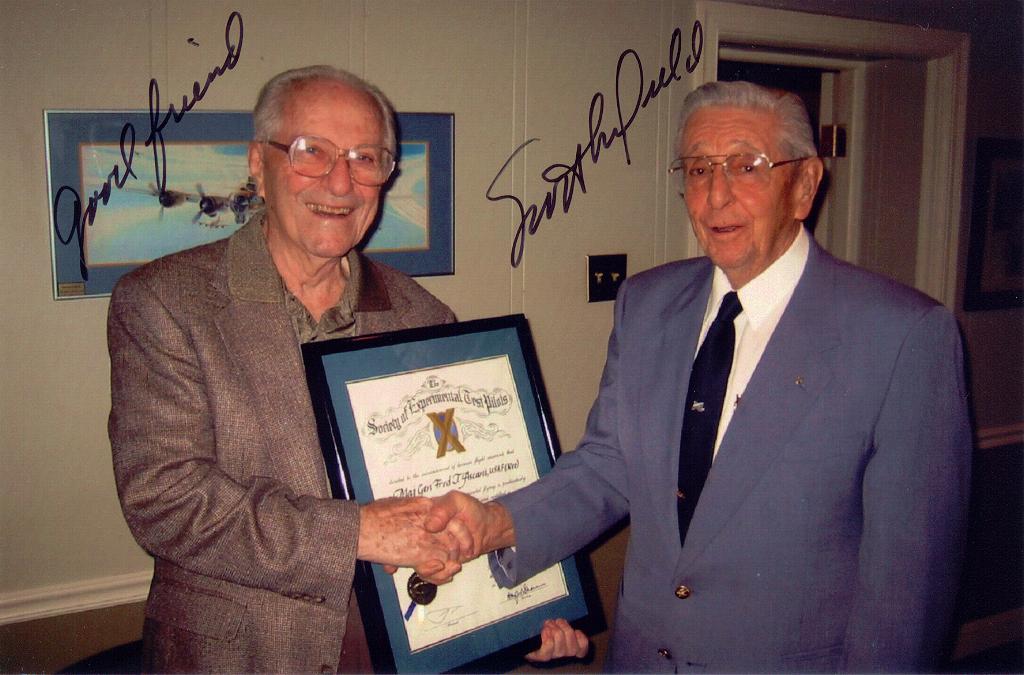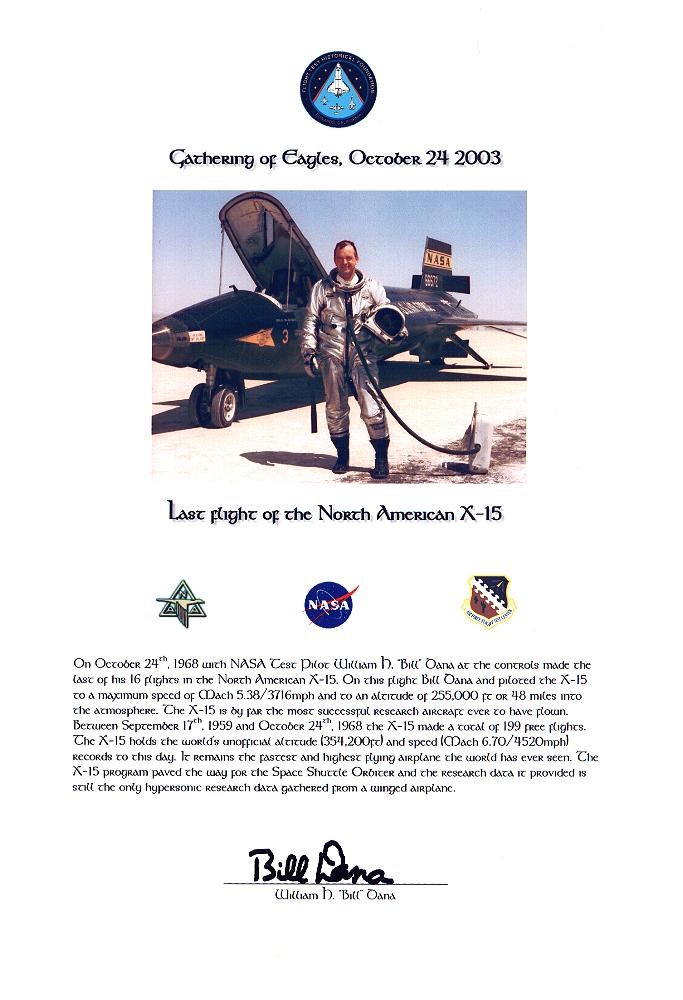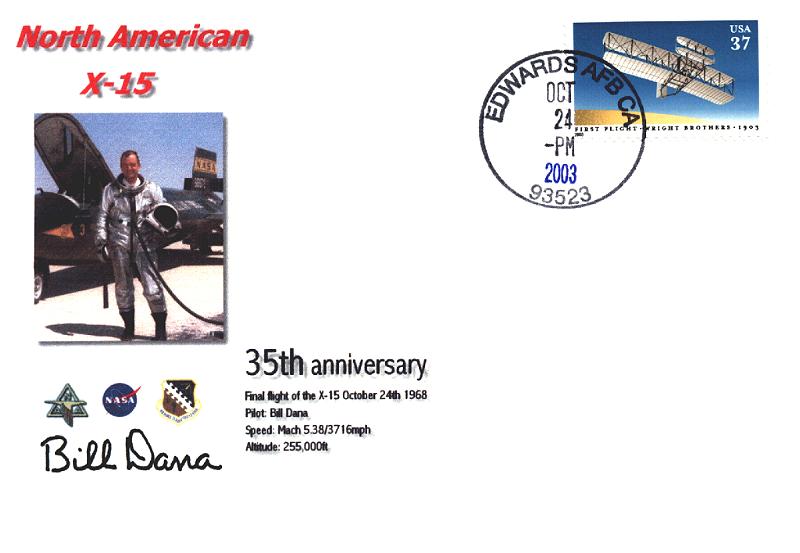Menu
Colonel Joseph F. "Joe" Cotton USAF ret. - (1922-2016)
Slide title
Joe Cotton & XB-70 "Cecil"
Button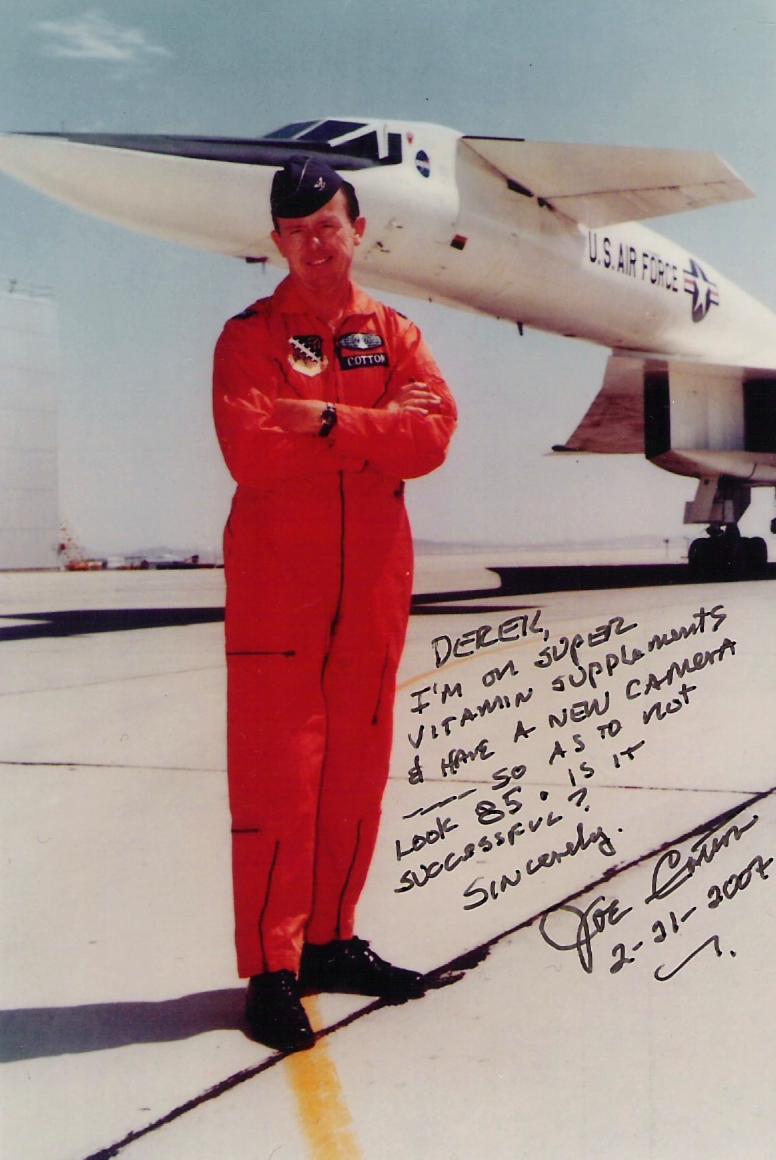
Slide title
A funny inscription
Button
Slide title
Joe & Al White - First Flight pilots of the XB-70
Button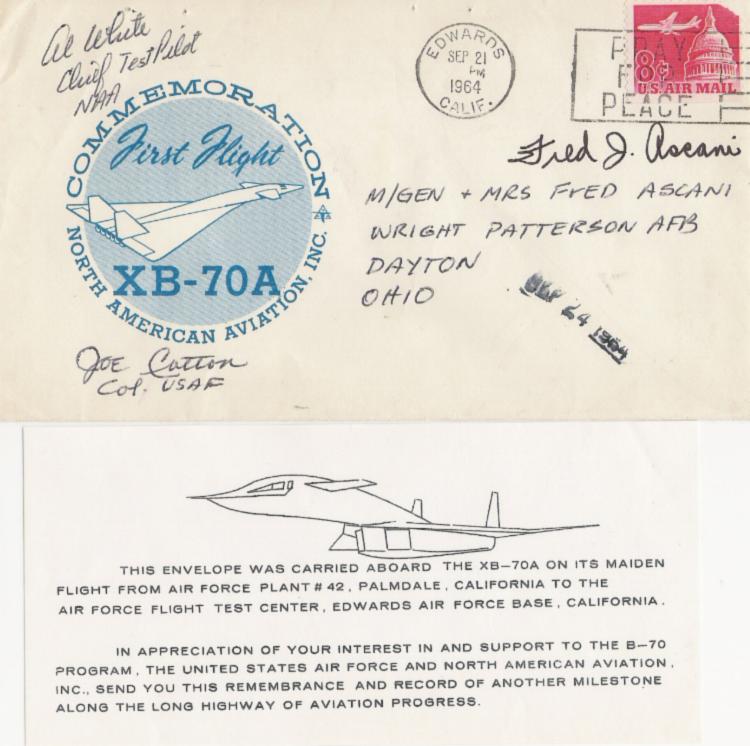
Slide title
Commemorative cover flown on the first XB-70 flight - Ex Fred J. Ascani collection
Button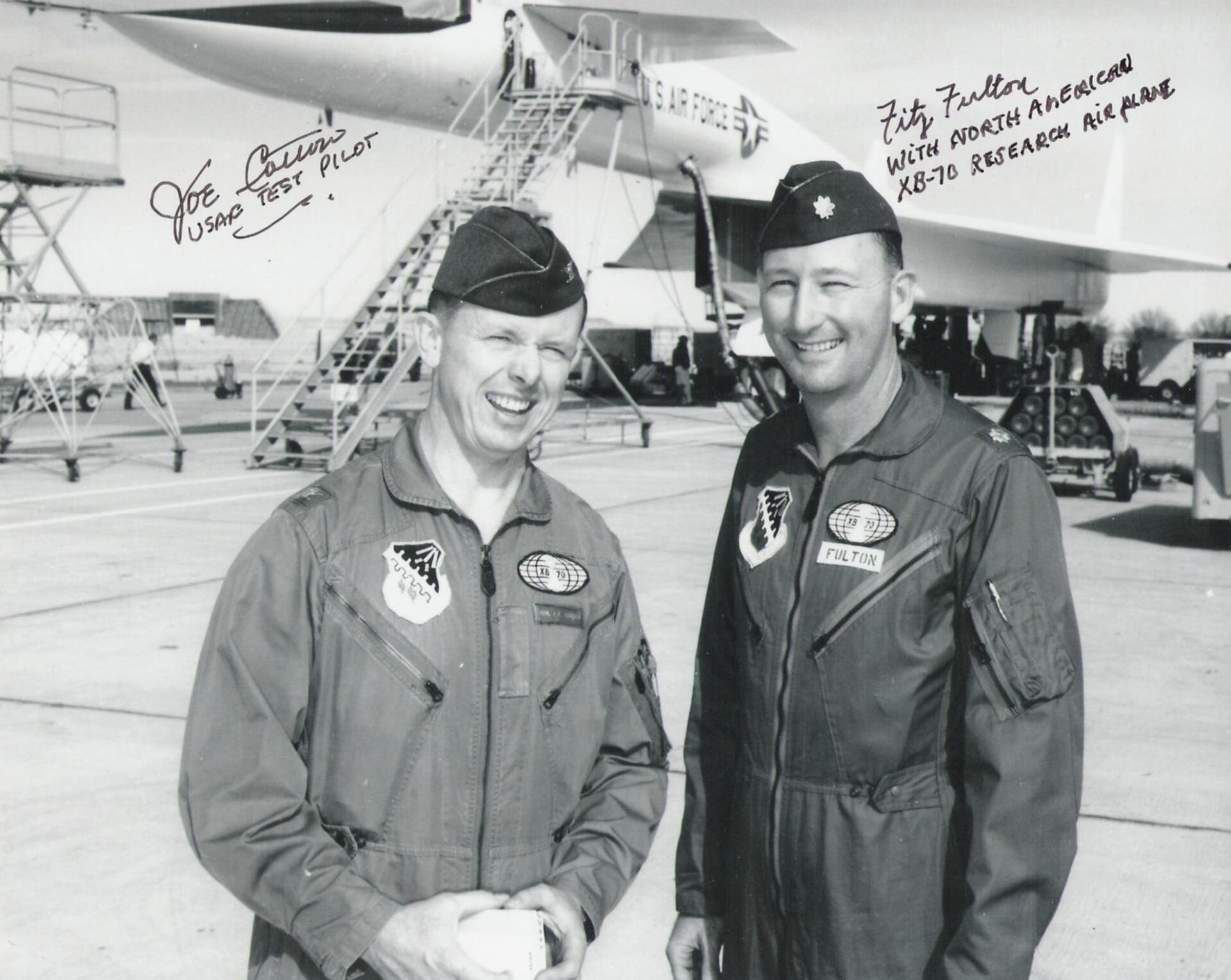
Slide title
Joe with Fitz Fulton
Button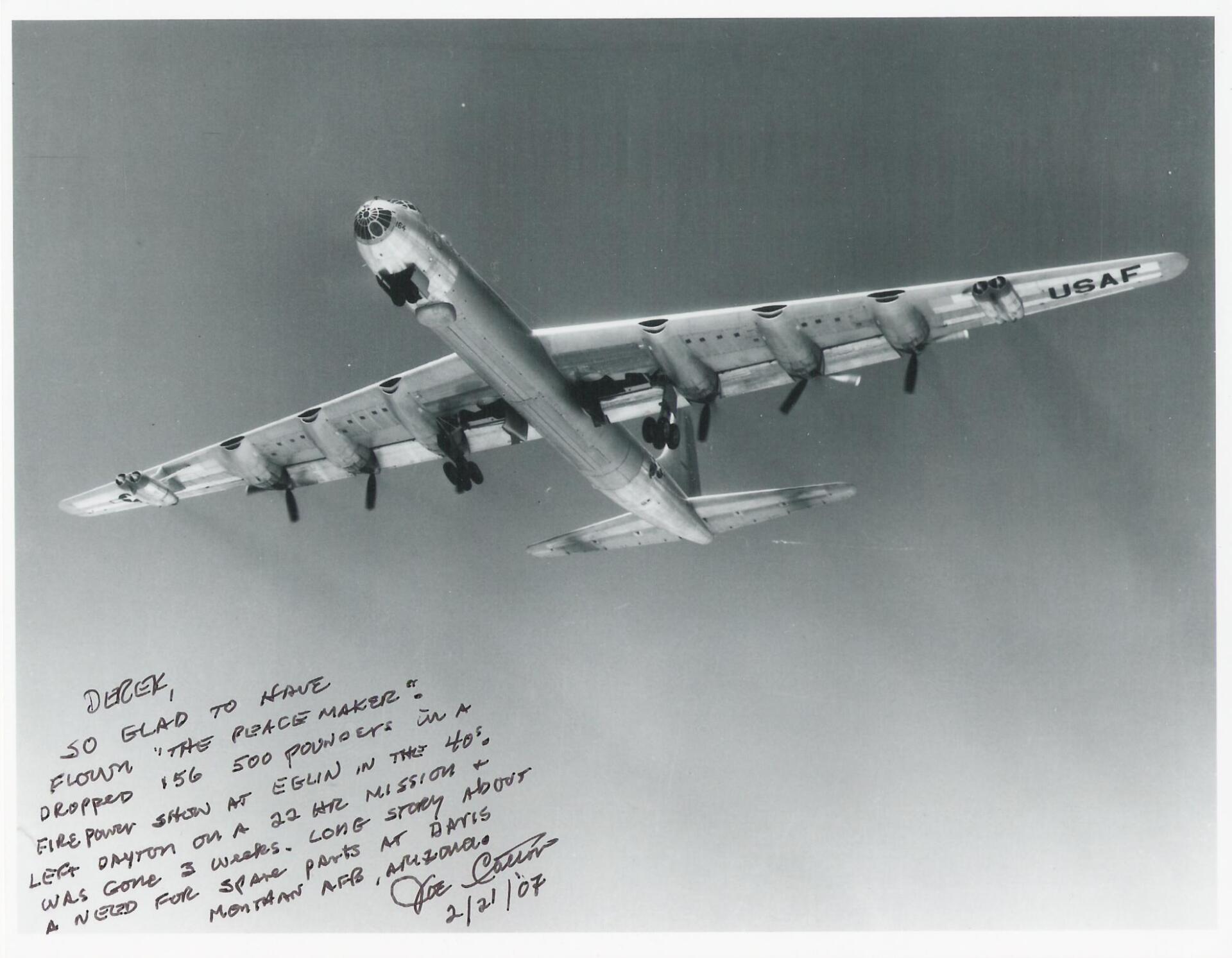
Slide title
Convair B-36 Peacemaker
Button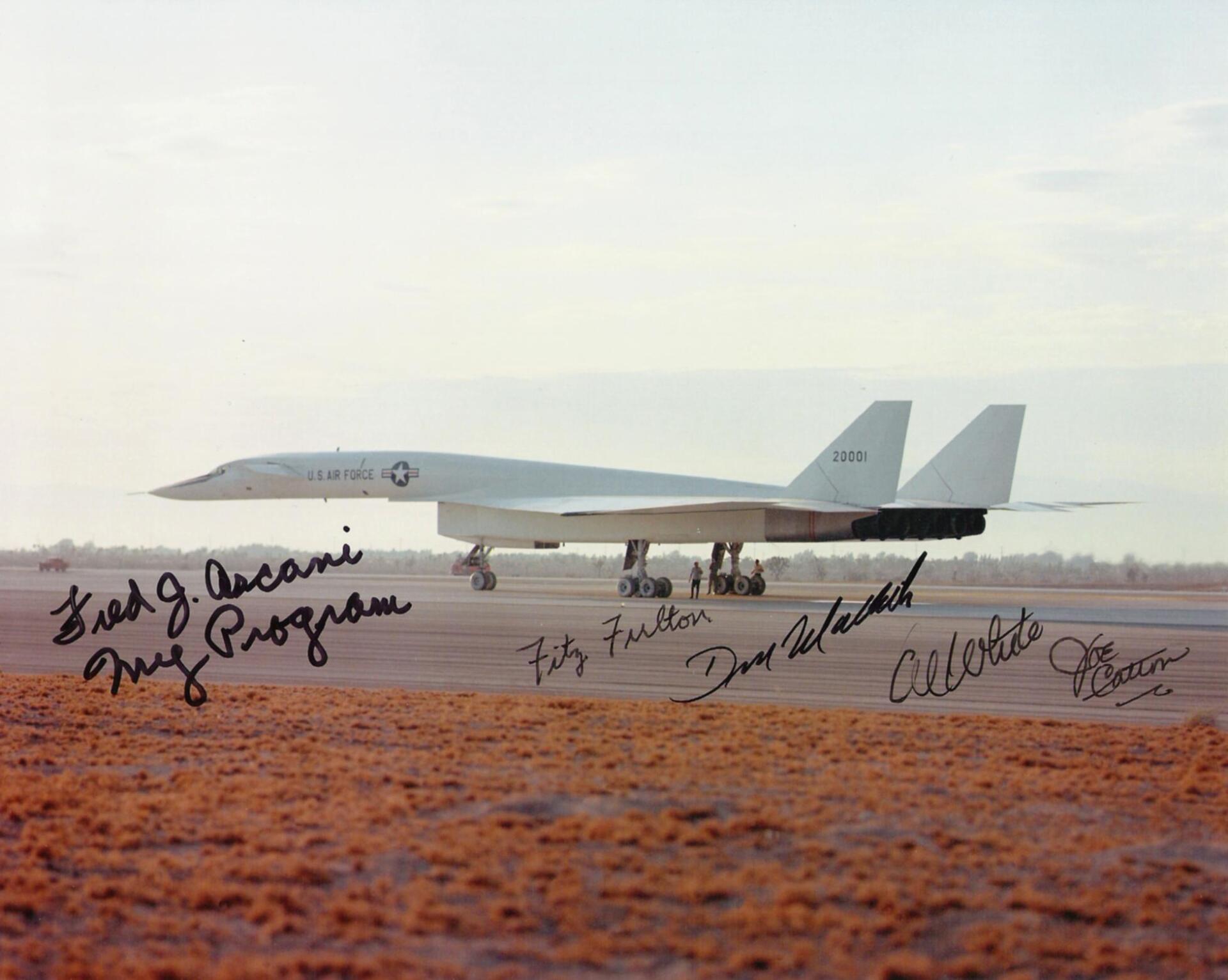
Slide title
XB-70 multi-signed
Button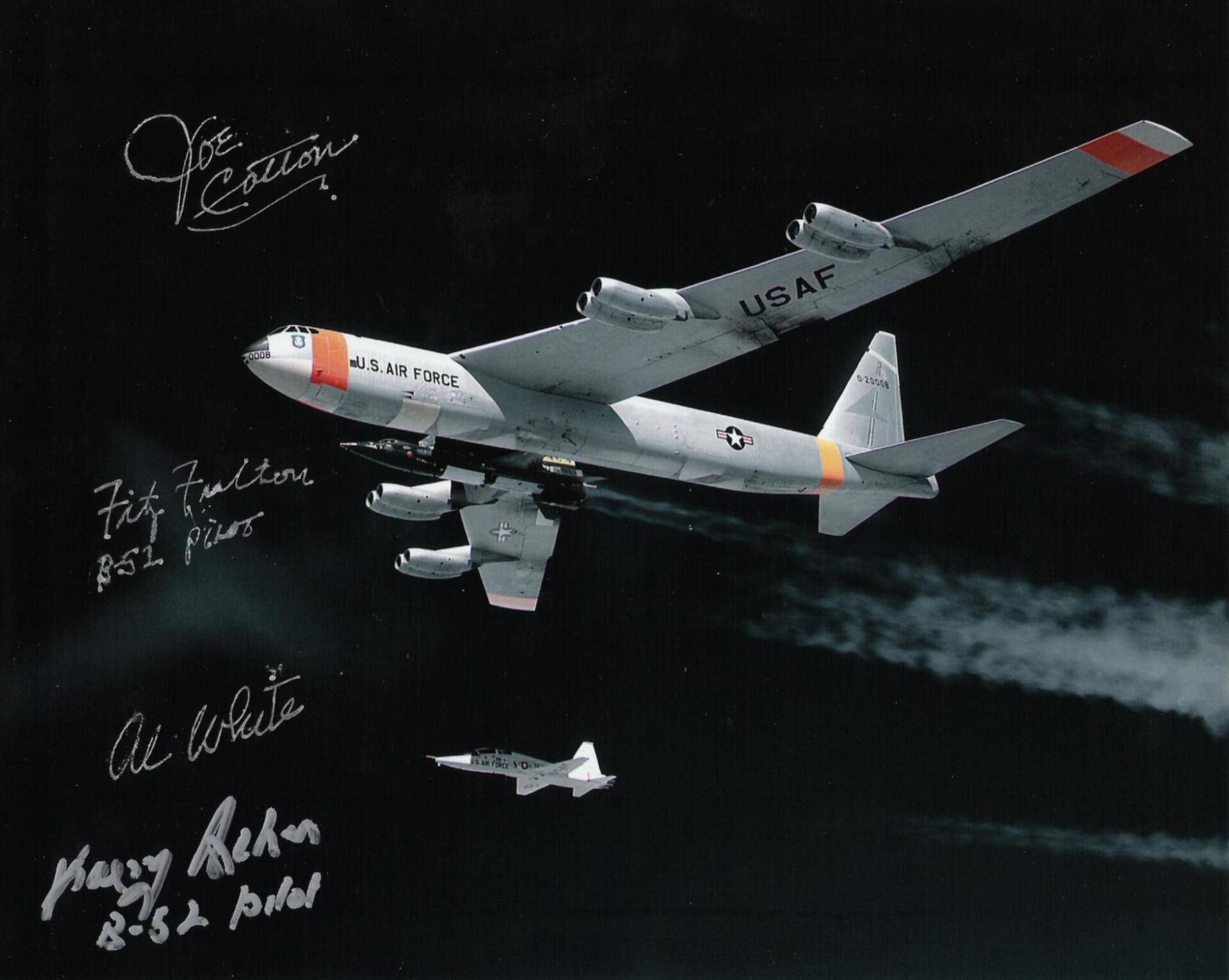
Slide title
B-52 pilots that launched the X-15
ButtonSlide title
X-15 record flight cover signed by Pete Knight & Joe Cotton
Button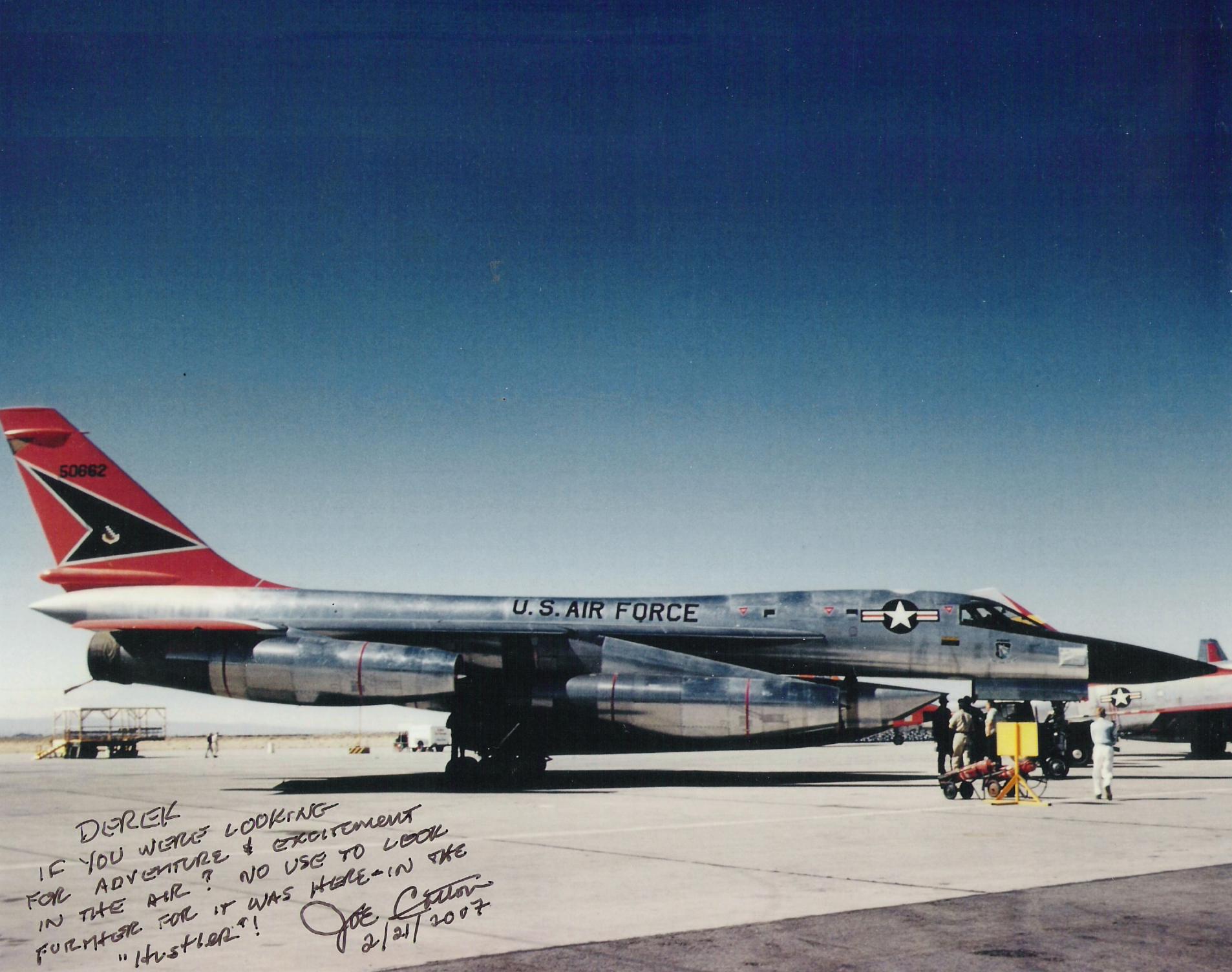
Slide title
Convair B-58 Hustler
ButtonSlide title
Joe signing my XB-70 model
ButtonSlide title
With XB-70 first flight pilots Al White & Joe Cotton
Button
Colonel Joe Cotton entered the Army Air Corps as a flying cadet in 1942, retired from the USAF in 1968 as a veteran test pilot (he was a test pilot for the USAF for 22 of his 26 years of service). Colonel Cotton went on to become a test pilot with United Airlines, bringing his total flying time to 16,000 hours in over 80 types of aircraft. When his B-17 was shot down over Greece on his first wartime mission, he spent four months evading German capture before being rescued and returned to the U.S. in 1944. He began his flight test career flying the Bell RP-63A, the "flying pinball machine," being developed as a flying target for bomber crew gunnery practice. He performed cold weather systems test on a variety of aircraft at Eglin and Ladd Fields prior to attending the Empire Test Pilot School in England.
Cotton was chief of Bomber Test at Wright Patterson while testing in all-weather including the arctic. He was pilot and later test director of the B-58 "Hustler" Flight Research and Development Program at Carswell AFB. In 1962, as USAF Chief Test Pilot, he flew the first flight of the XB-70 at Edwards AFB. He flew the XB-70A No.2 at Mach 3.08 at 72,800 feet on April 12, 1966; the highlight of his 62 flights in the XB-70. He remained with the project through the last flight of the Development Test and Evaluation program.
Colonel Cotton also flew the NB-52 launch aircraft for many of the X-15 missions including "Pete" Knight's maximum speed flight on October 3rd, 1967. Named 1966 Pilot of the Year by the International Order of Characters, Cotton has been awarded a Legion of Merit, Air Medal, Air Force Commendation Medal and the City of Lancaster's Aerospace Walk of Honor (1997). I am honored to have met Colonel Cotton during the weekend of the 2003 Flight Test Historical Foundation's "Gathering of Eagles" which was held during the weekend of the Edwards AFB Open House & Airshow in October 2003 and I treasured his friendship for the next 13 years. Colonel Cotton sadly passed away on May 5th, 2016.
Colonel Albert H. "Al" Crews (USAF ret.)
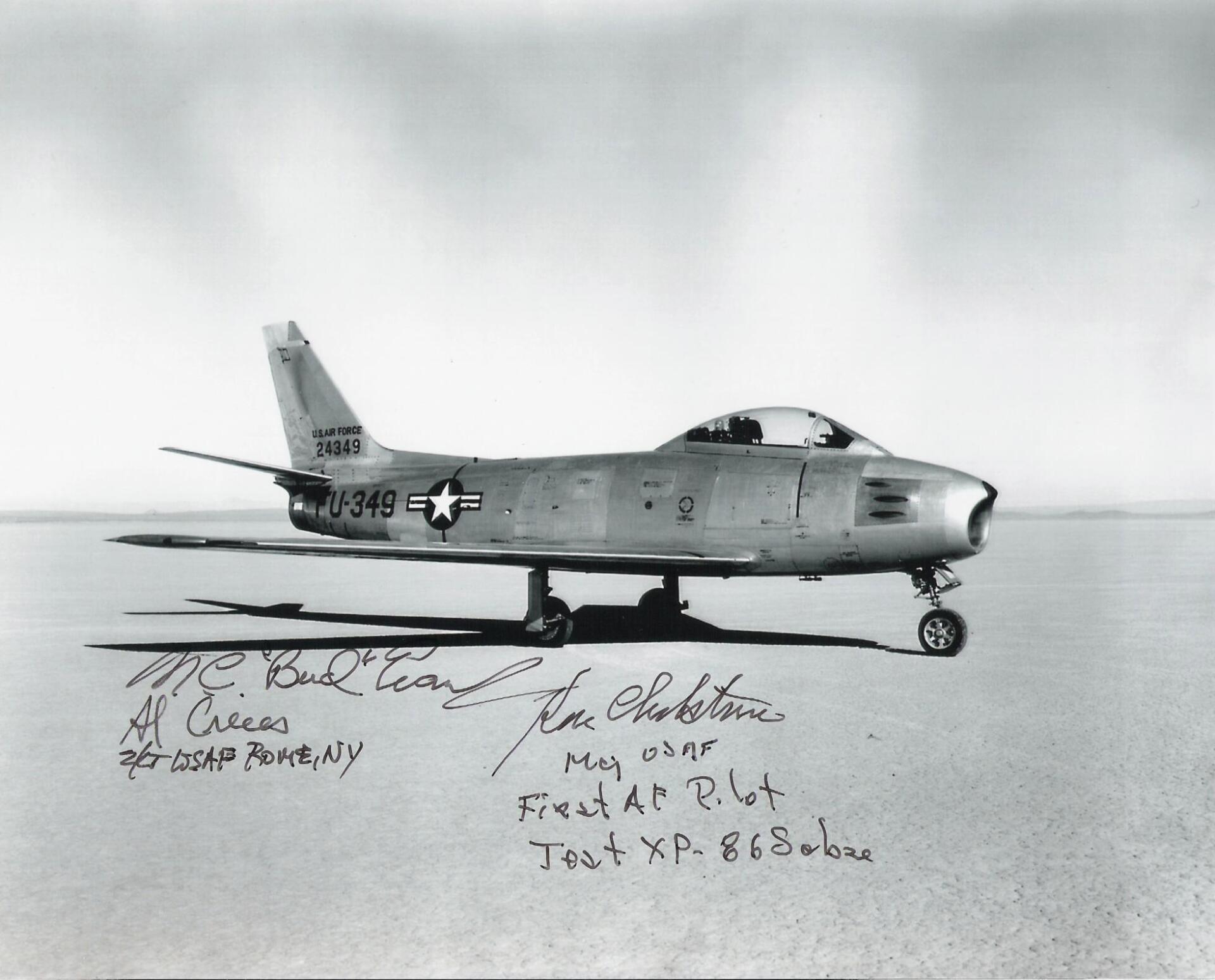
Slide title
F-86 signed by Bud Evans, Al Crews & Ken Chilstrom
Button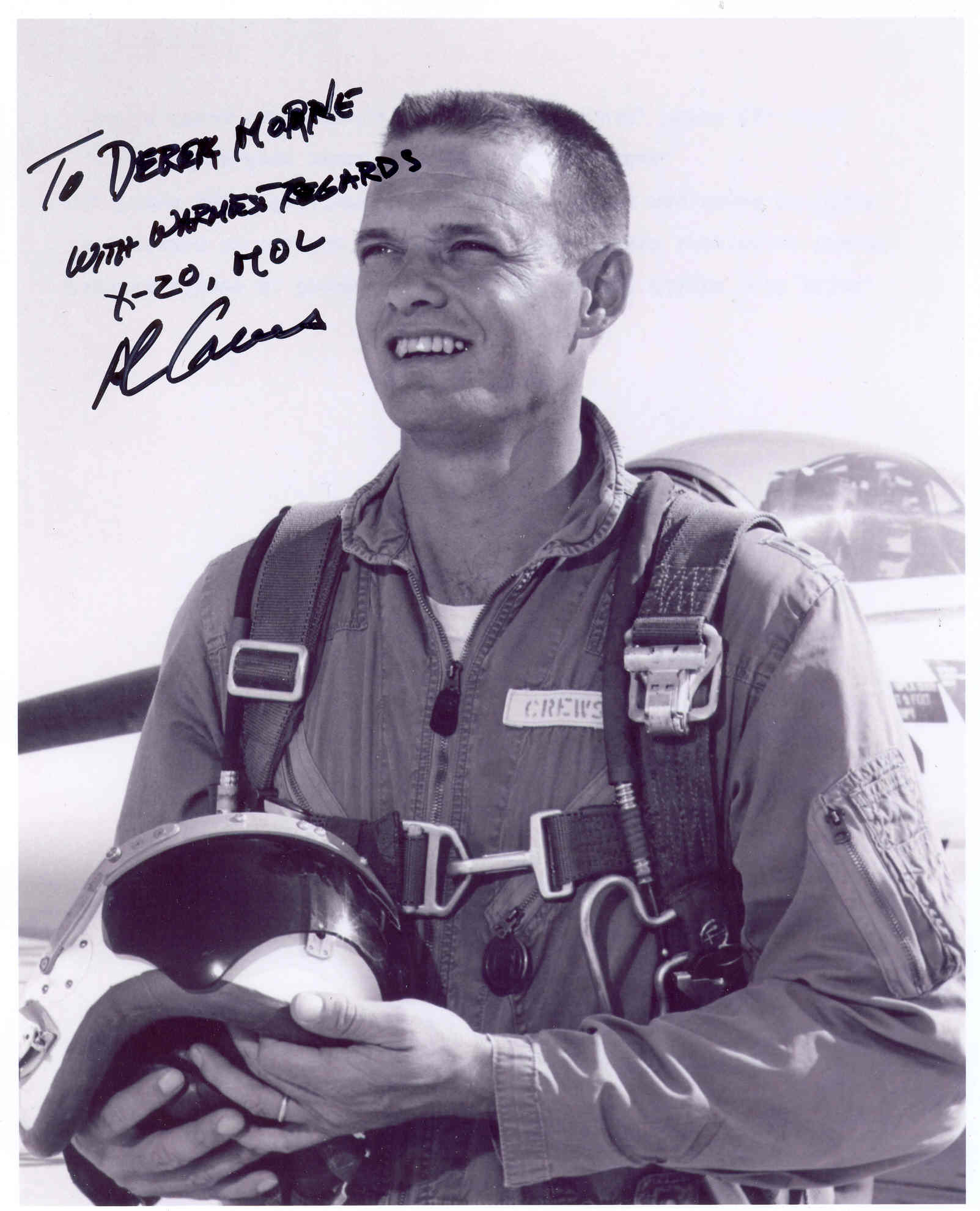
Slide title
Official AFFTC portrait
Button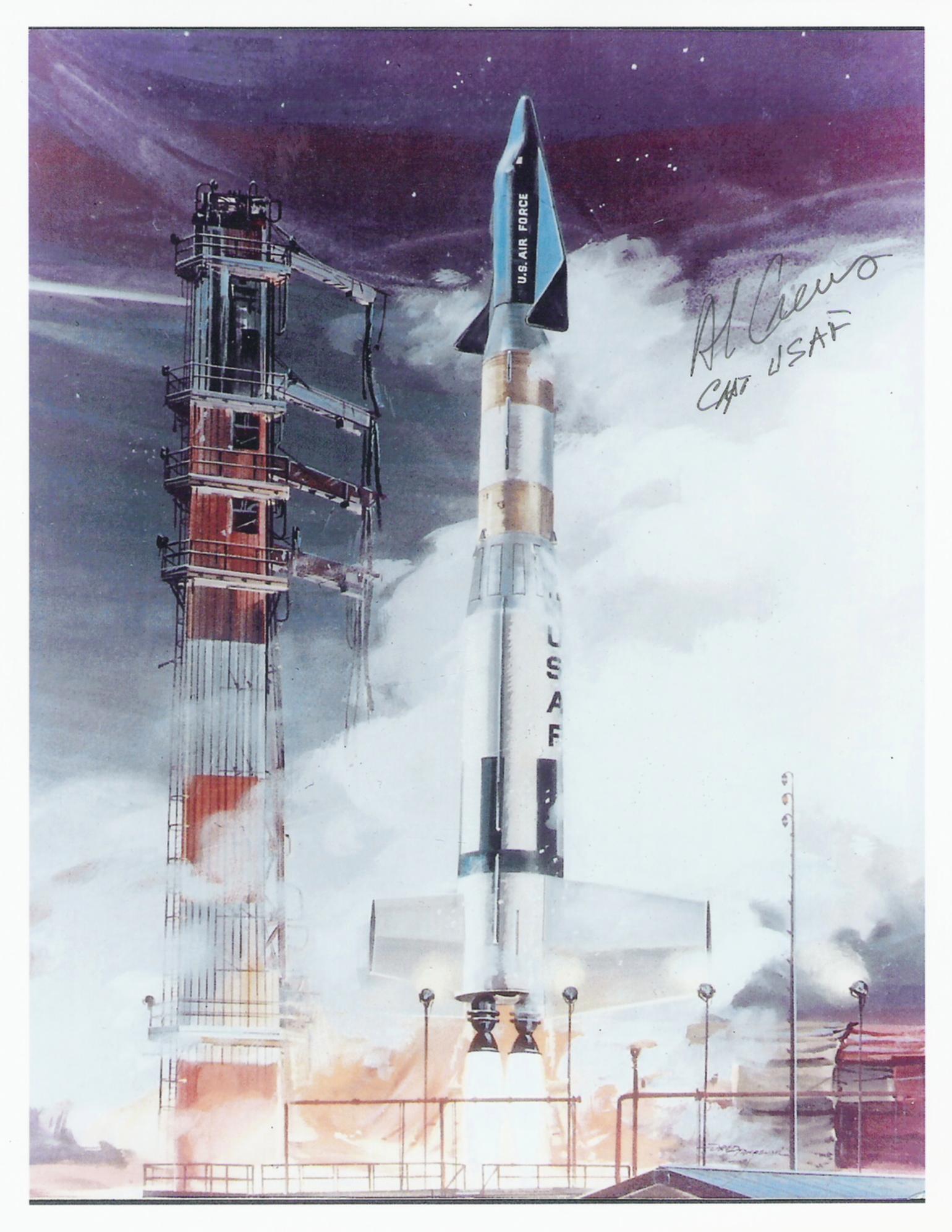
Slide title
X-20 Dynasoar launch - Artist Concept
Button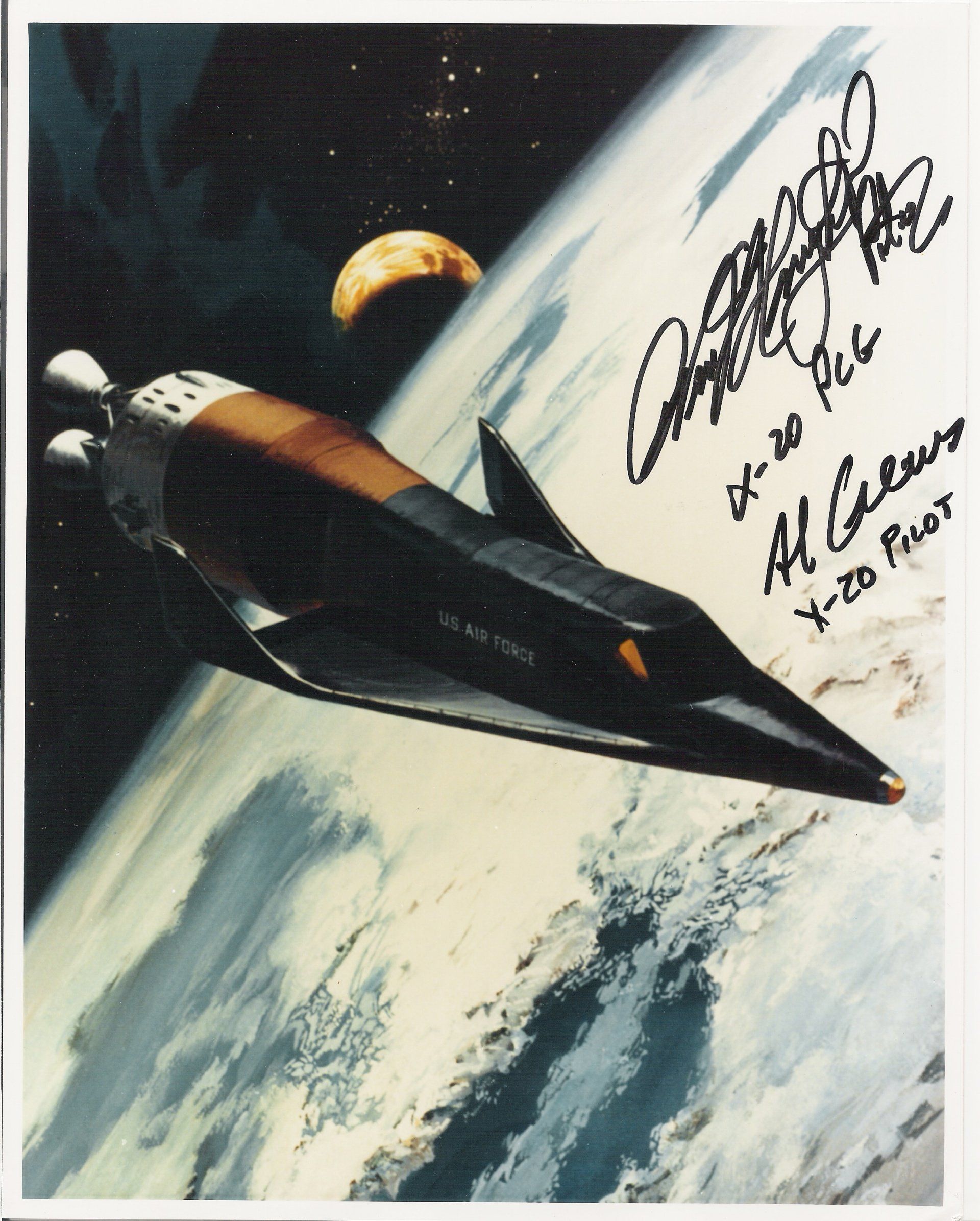
Slide title
X-20 Dynasoar in orbit - Artists concept
Button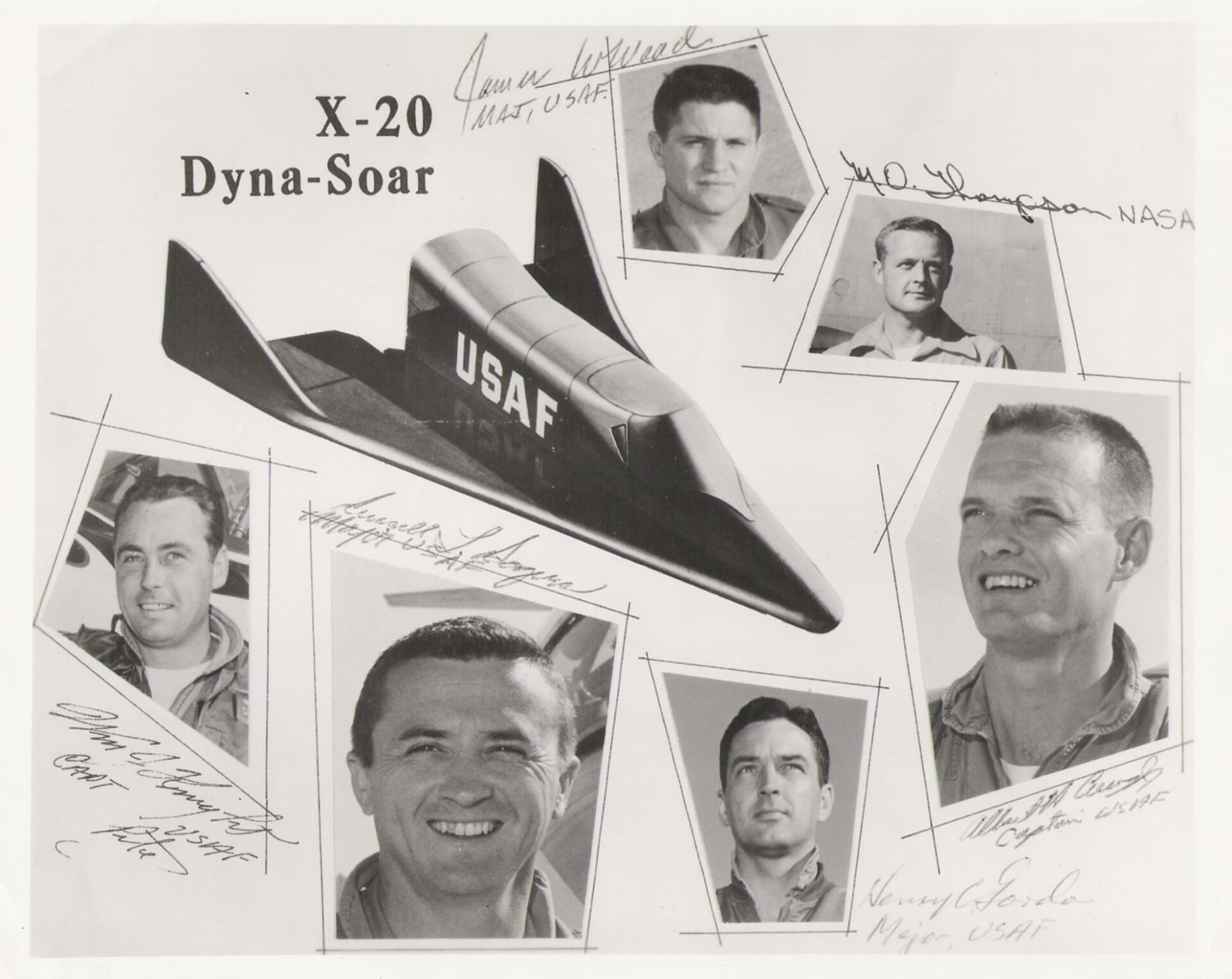
Slide title
X-20 pilots signed - Ex Grp. Capt. Harry Archer collection
Button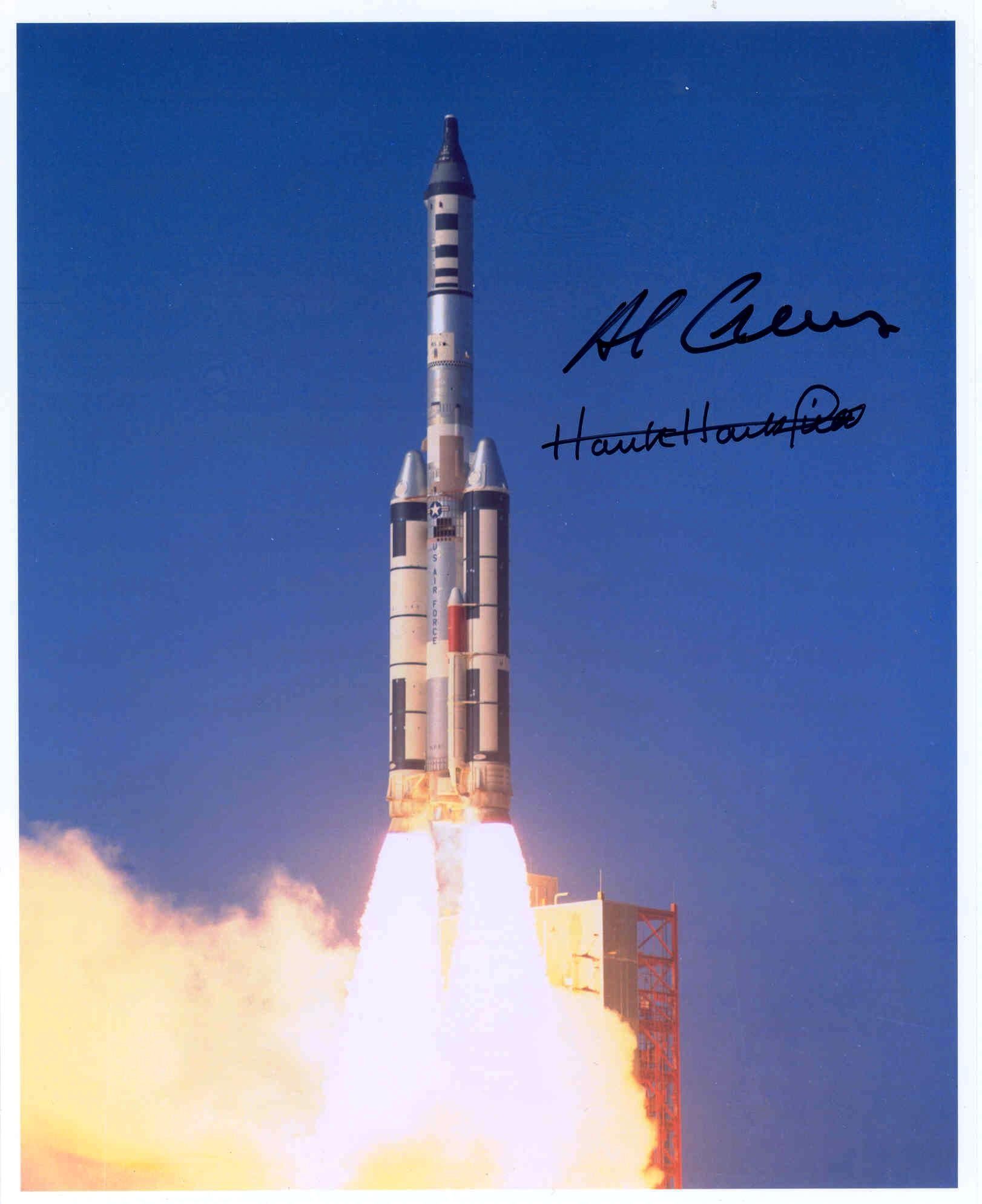
Slide title
Titan III-C/MOL launch. The capsule previously flew on Gemini 2
ButtonSlide title
Al Crews at Spacefest 2009
Button
Al Crews was born in El Dorado, Arkansas on March 23rd, 1929. Crews graduated from the University of Southern Louisiana in 1950 with a Bachelor of Science in chemical engineering. He earned a Masters of Science in aeronautical engineering from the United States Air Force Institute of Technology in 1959. Al Crews is a retired astronaut and Colonel in United States Air Force and is married with three children. Crews was selected as a military astronaut designee in the second group of X-20 Dynasoar astronauts on April 20th, 1962 and was assigned as a Dynasoar pilot on September 20th, 1962. The Dynasoar program was cancelled in 1963.
On November 12th, 1965, Crews was selected as an astronaut for the USAF's Manned Orbiting Laboratory program in the MOL Group 1 selection. After cancellation of MOL in 1969, Crews transferred to NASA Flight Crew Operations at the Johnson Space Center, Houston, Texas. He remained at NASA as a pilot until his retirement at age 65 and flew such aircraft as the "Super Guppy" and WB-57F atmospheric research aircraft.
A. Scott Crossfield - (1921-2006)
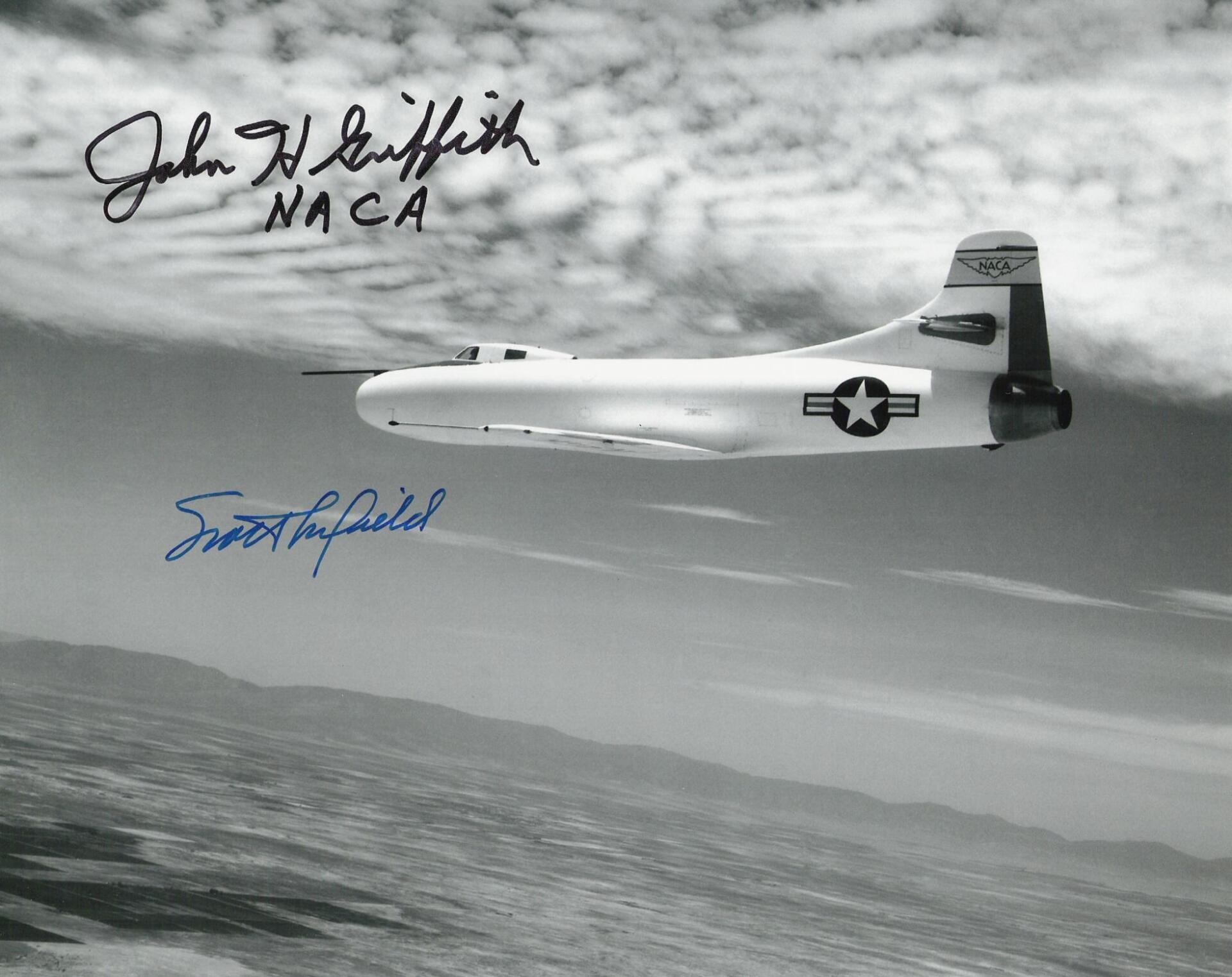
Slide title
Douglas D-558-I
Button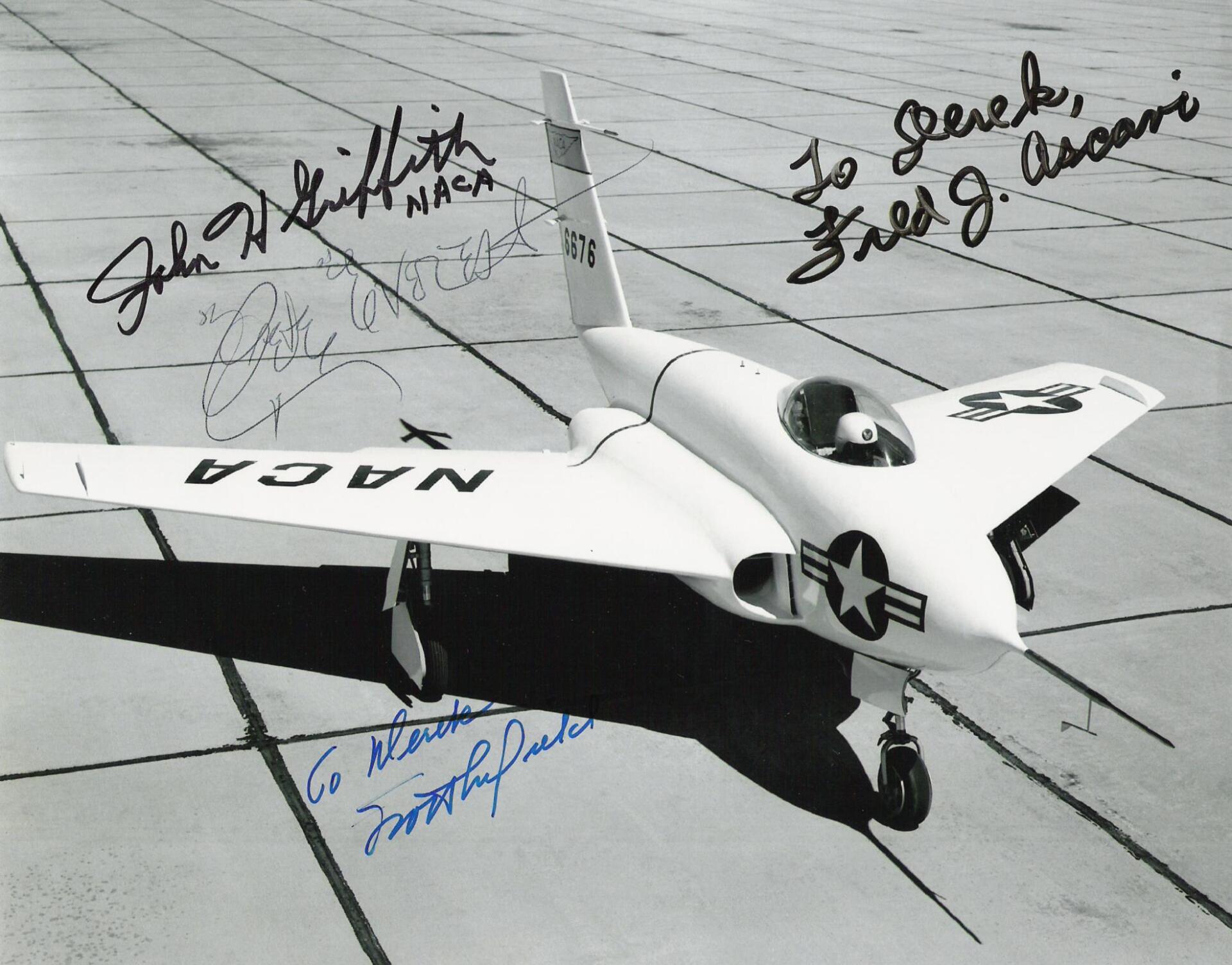
Slide title
Northrop X-4 Bantam
Button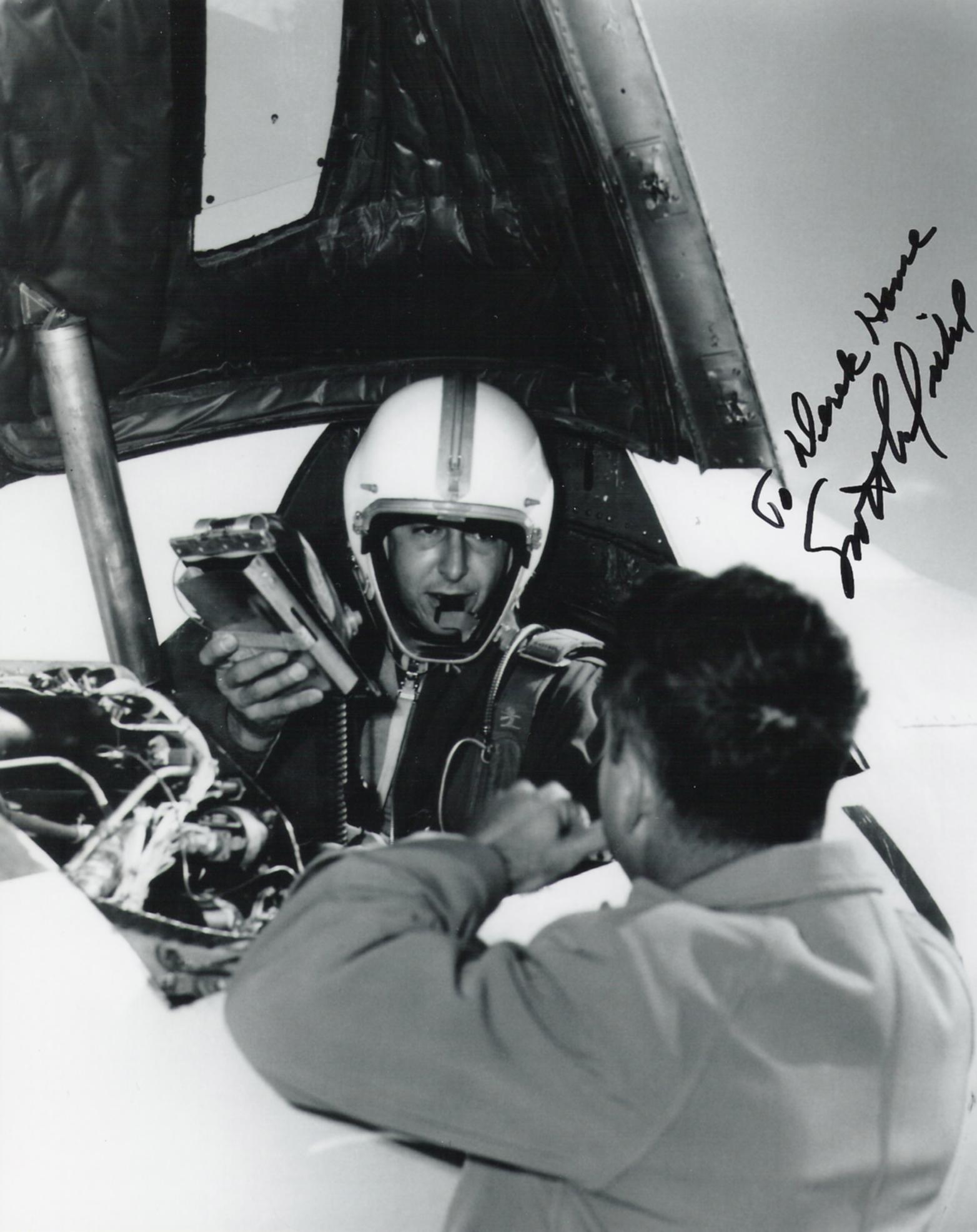
Slide title
In the cockpit of the Douglas D-558-II Skyrocket
ButtonSlide title
D-558-II Launch
ButtonSlide title
The NACA team that made the first flight to Mach 2
Button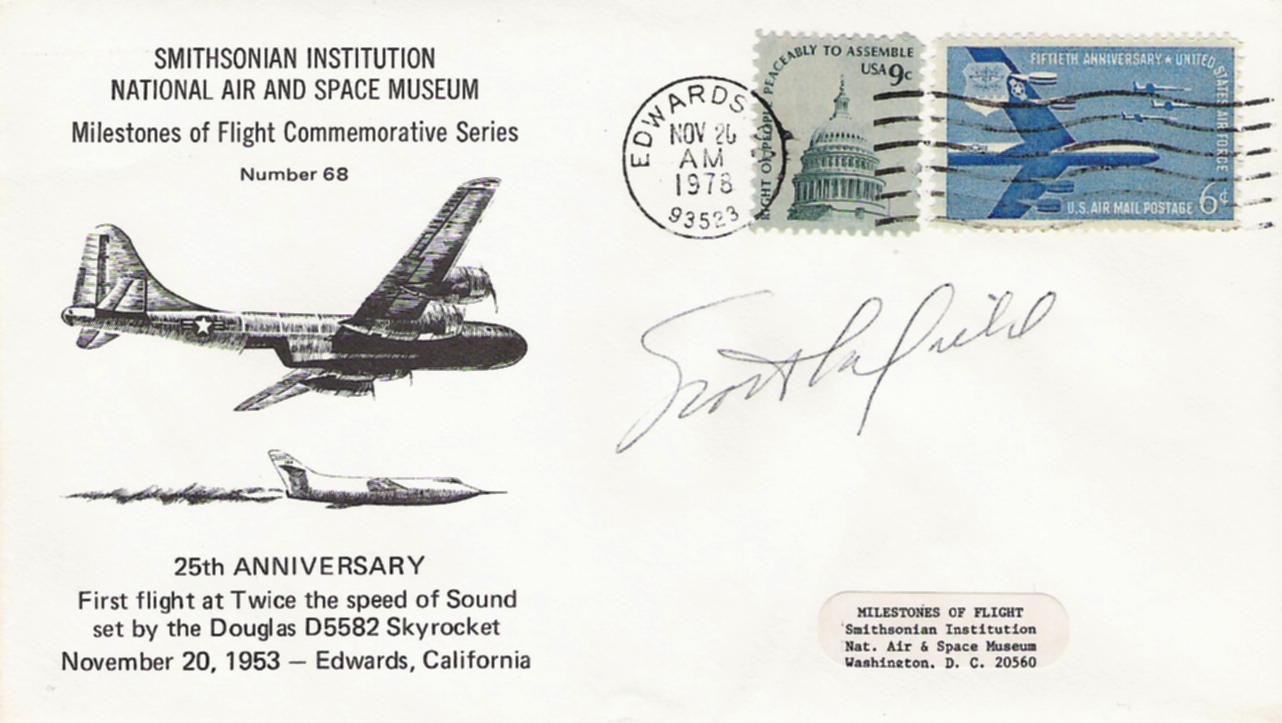
Slide title
Skyrocket 25th Anniverary cover
Button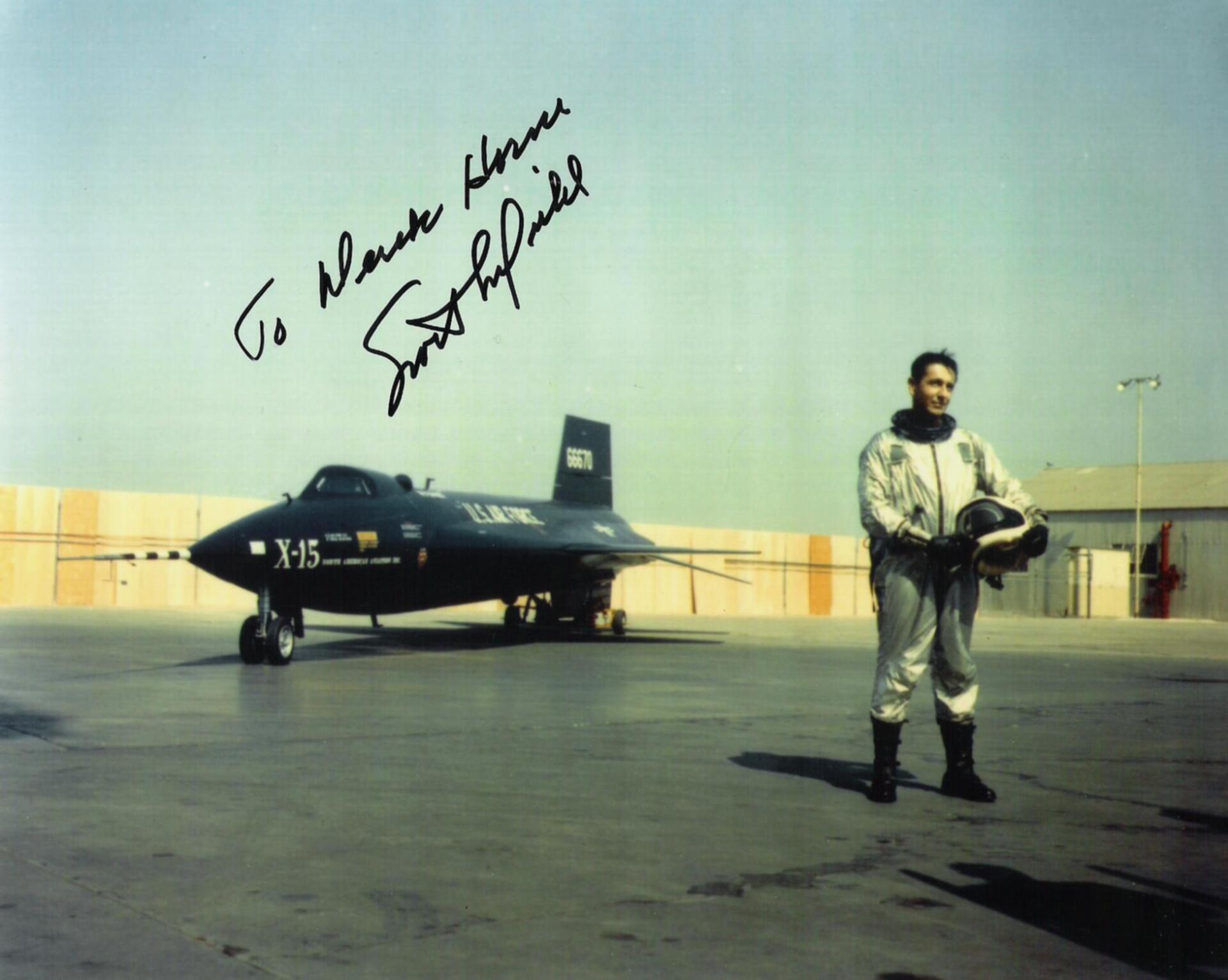
Slide title
X-15 Roll-Out
Button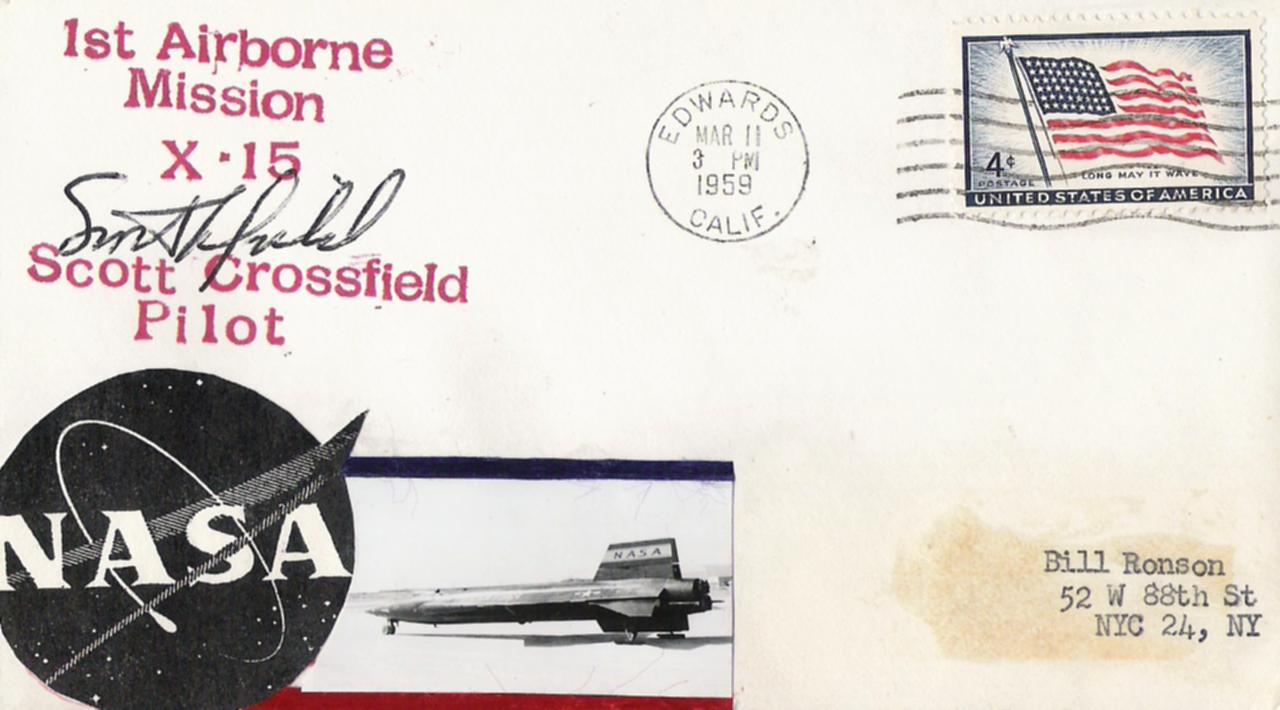
Slide title
X-15 First Captive Flight
Button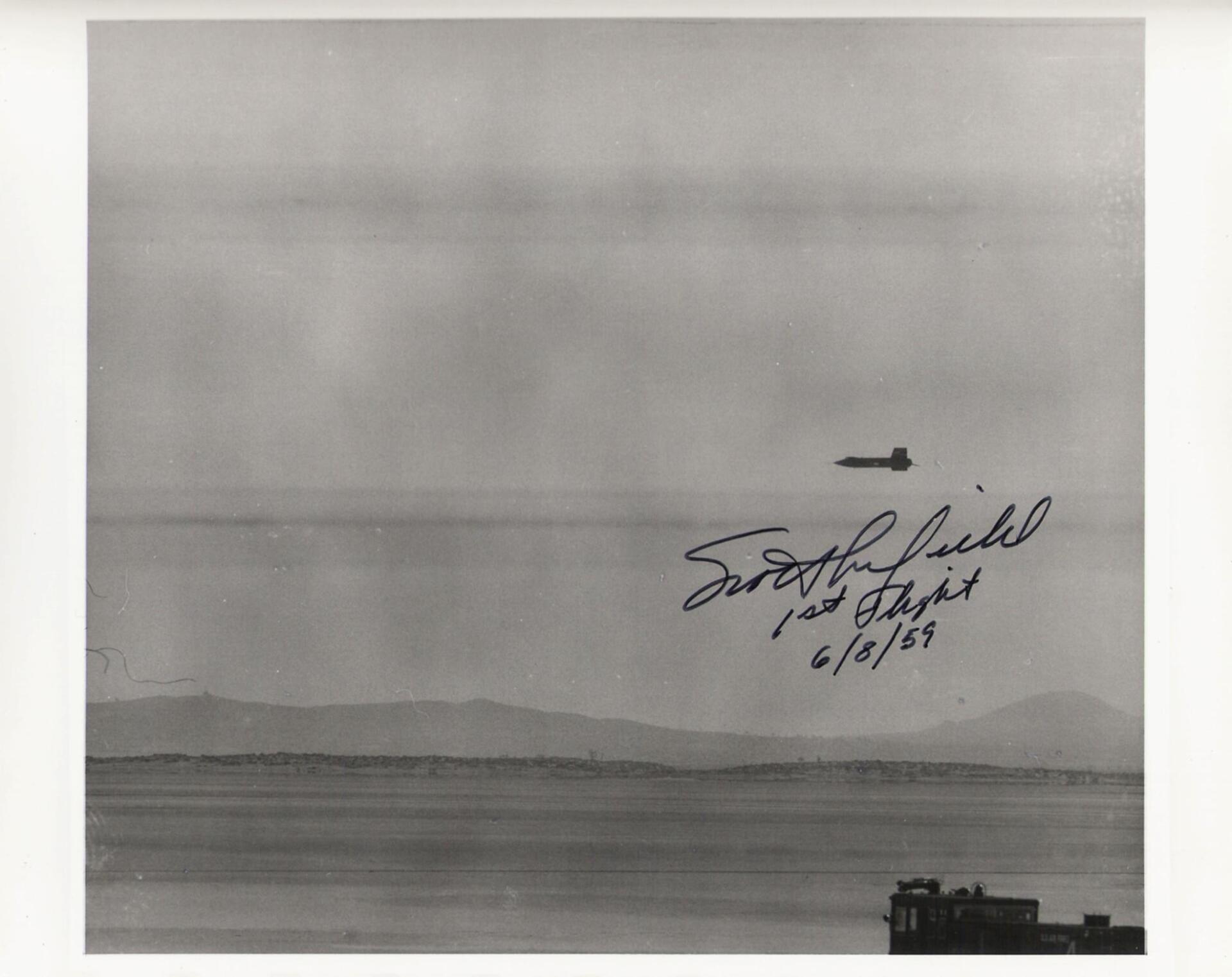
Slide title
First flight of the X-15
ButtonSlide title
Scott Crossfield in X-15 pressure suit
ButtonSlide title
Not a good day! Unable to jetison all the fuel, the X-15 touched down hard and broke her back
Button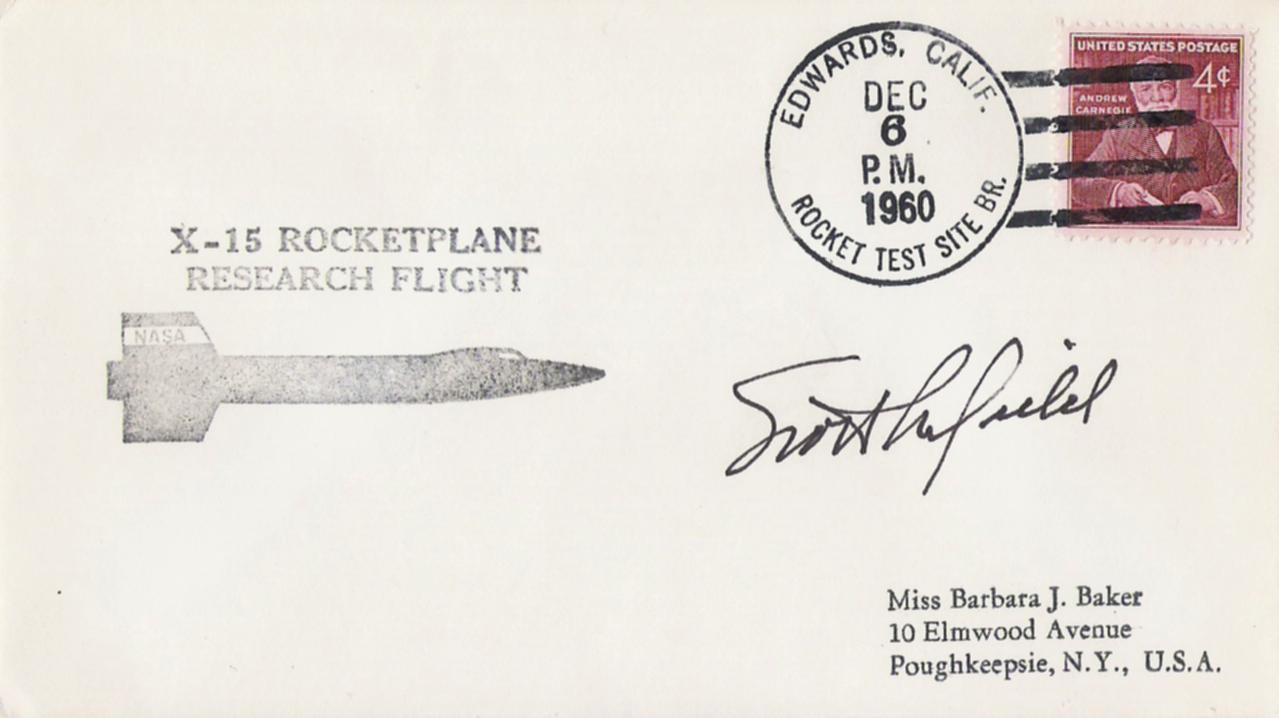
Slide title
Scott Crossfield's final X-15 flight
Button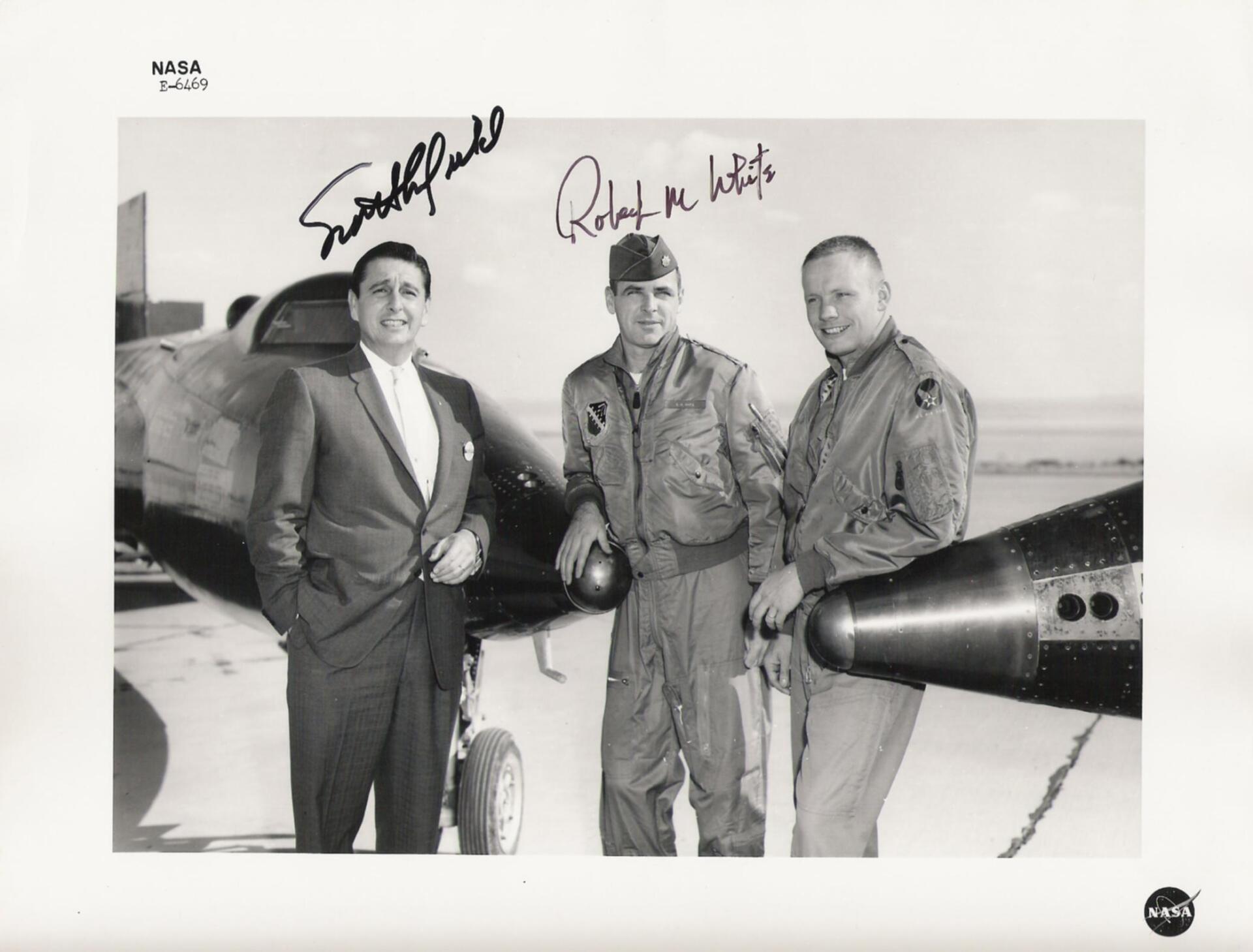
Slide title
X-15 "Key hand-over" ceremony
Button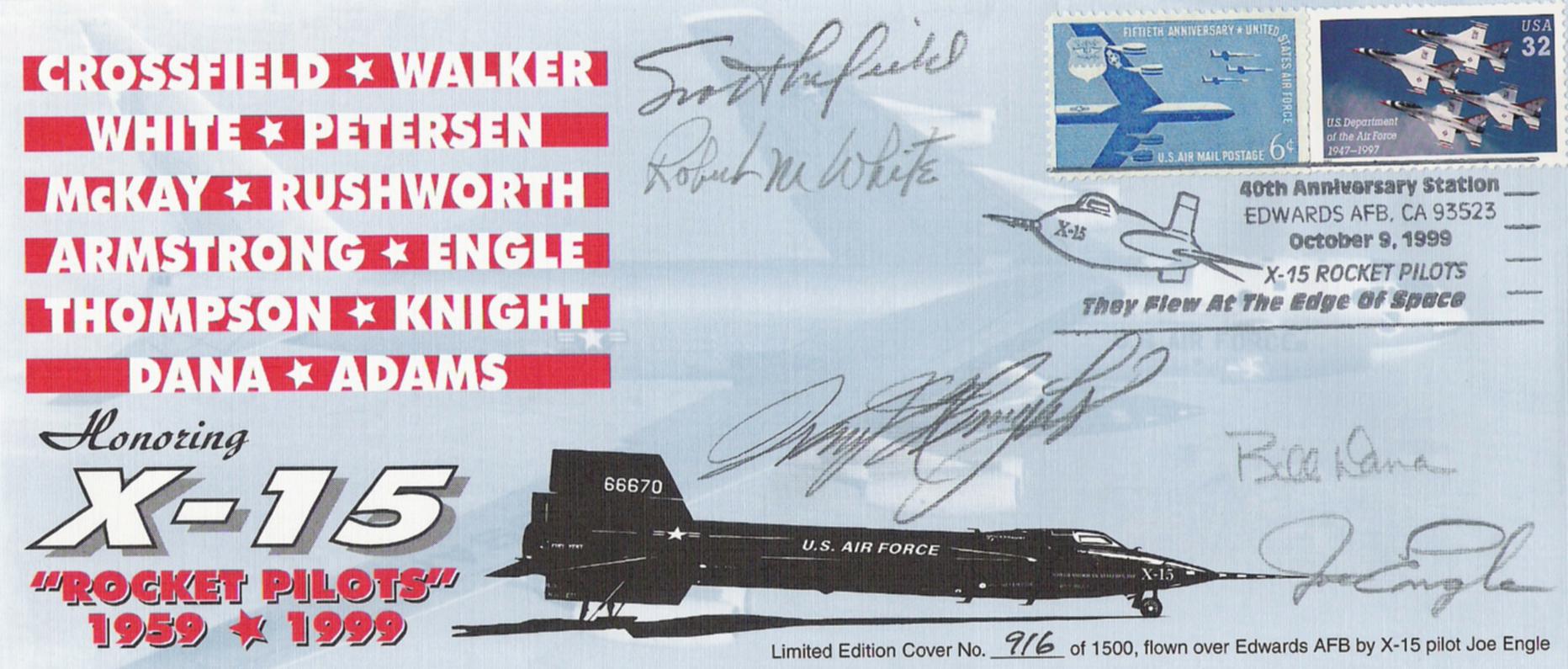
Slide title
This cover flown by Gen. Joe Engle - Signed by X-15 pilots Crossfield, Dana, Engle, Knight & White
ButtonSlide title
Crossfield presenting his good friend Fred J. Ascani with his SETP Honorary Fellowship Award
Button
Scott Crossfield served with the U.S. Navy as a fighter pilot and instructor pilot during WWII. As a test pilot for the NACA, Scott Crossfield tested the X-1, X-4, X-5, XF-92A, F-100A, YF-102, D-558-I and D-558-II. Crossfield became the first person to fly at twice the speed of sound on November 20th, 1953 in the Douglas D-558-II Skyrocket. The aircraft was designed . Crossfield left the NACA to join North American Aviation where he played a key role in the design, development and testing of the X-15 rocket powered hypersonic research airplane. In the X-15 Crossfield made 16 Captive Flights (where the X-15 was carried aloft but not launched), 1 Glide Flight 13 Powered Flights).
Sadly Scott Crossfield perished when his single-engine plane crashed in Georgia on April 19th 2006 when he was vectored by Air Traffic Control into a thunderstorm. He was 84.
Visit the Scott Crossfield's Wikipedia page & read Scott Crossfield's NASA Dryden Flight Research Center (now Armstrong FRC) biography.
William H. "Bill" Dana - (1930-2014)
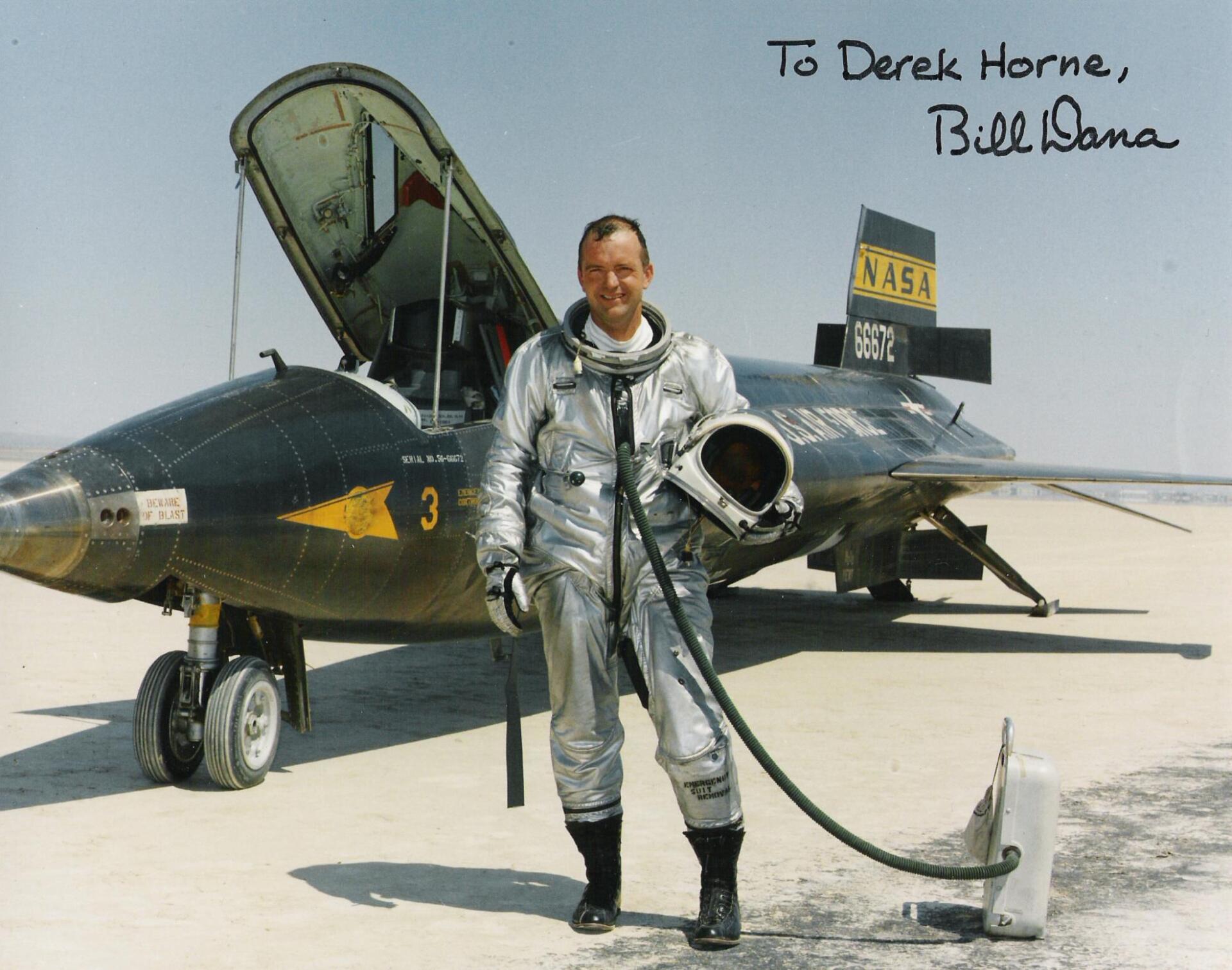
Slide title
Bill Dana with the X-15
Button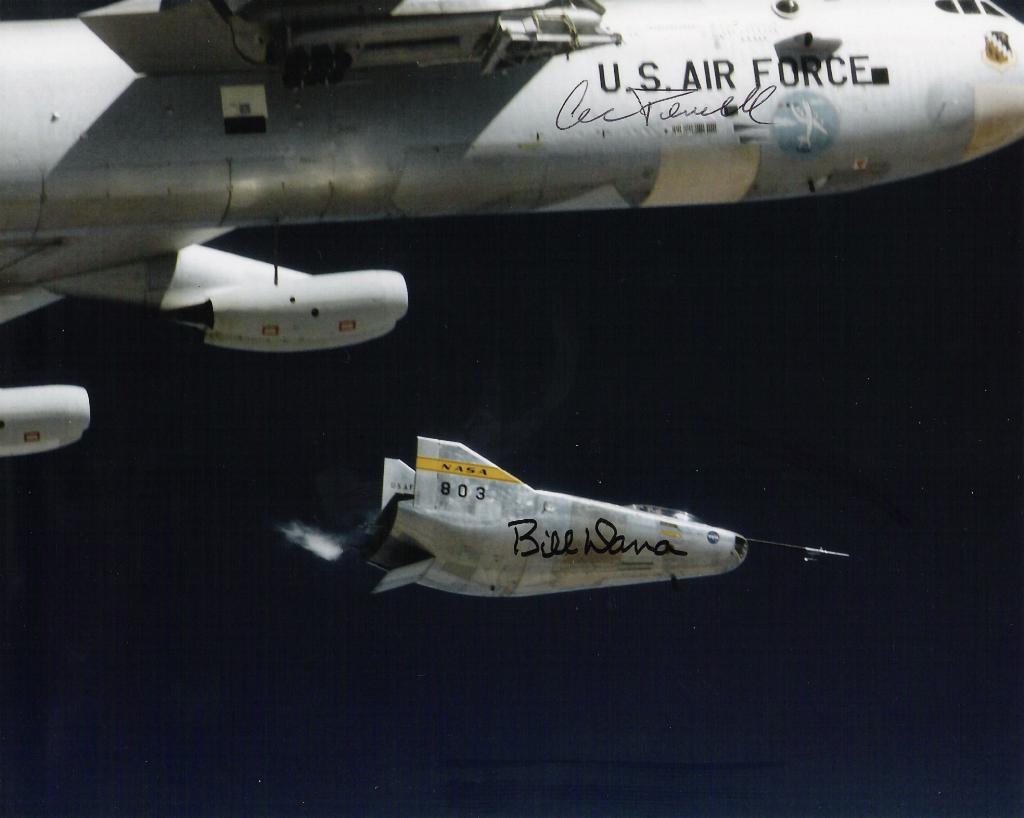
Slide title
M2-F3 Launch
Button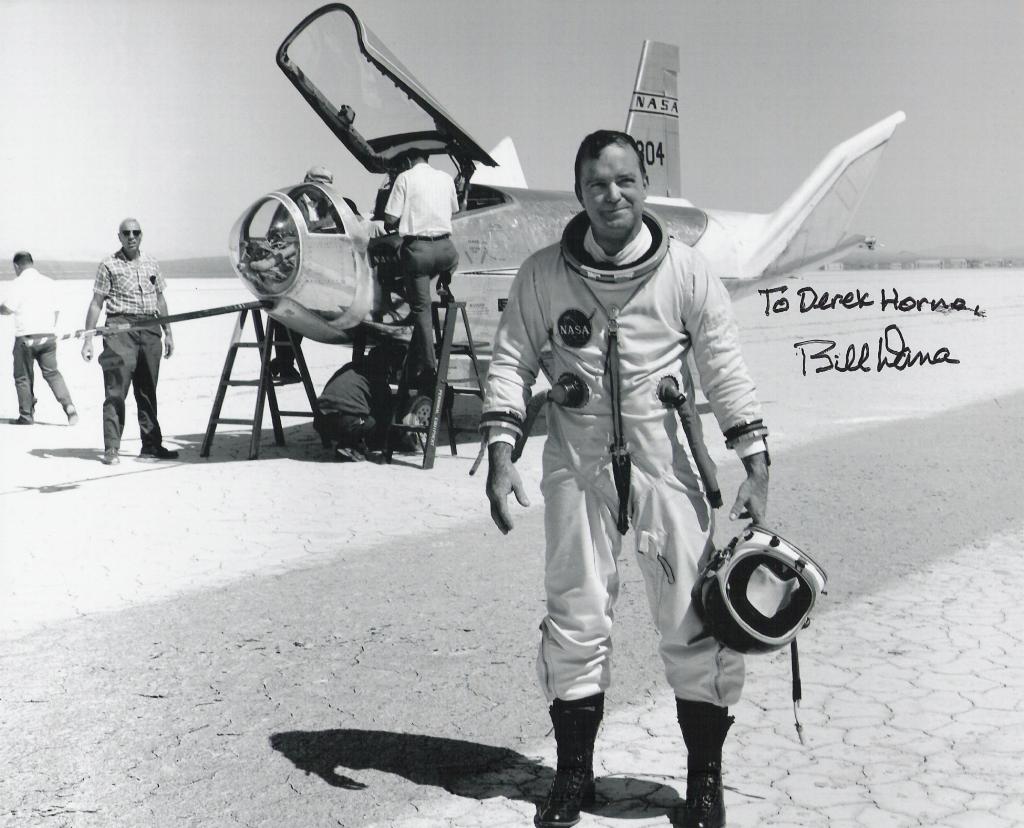
Slide title
Bill Dana with the Northrop HL-10
Button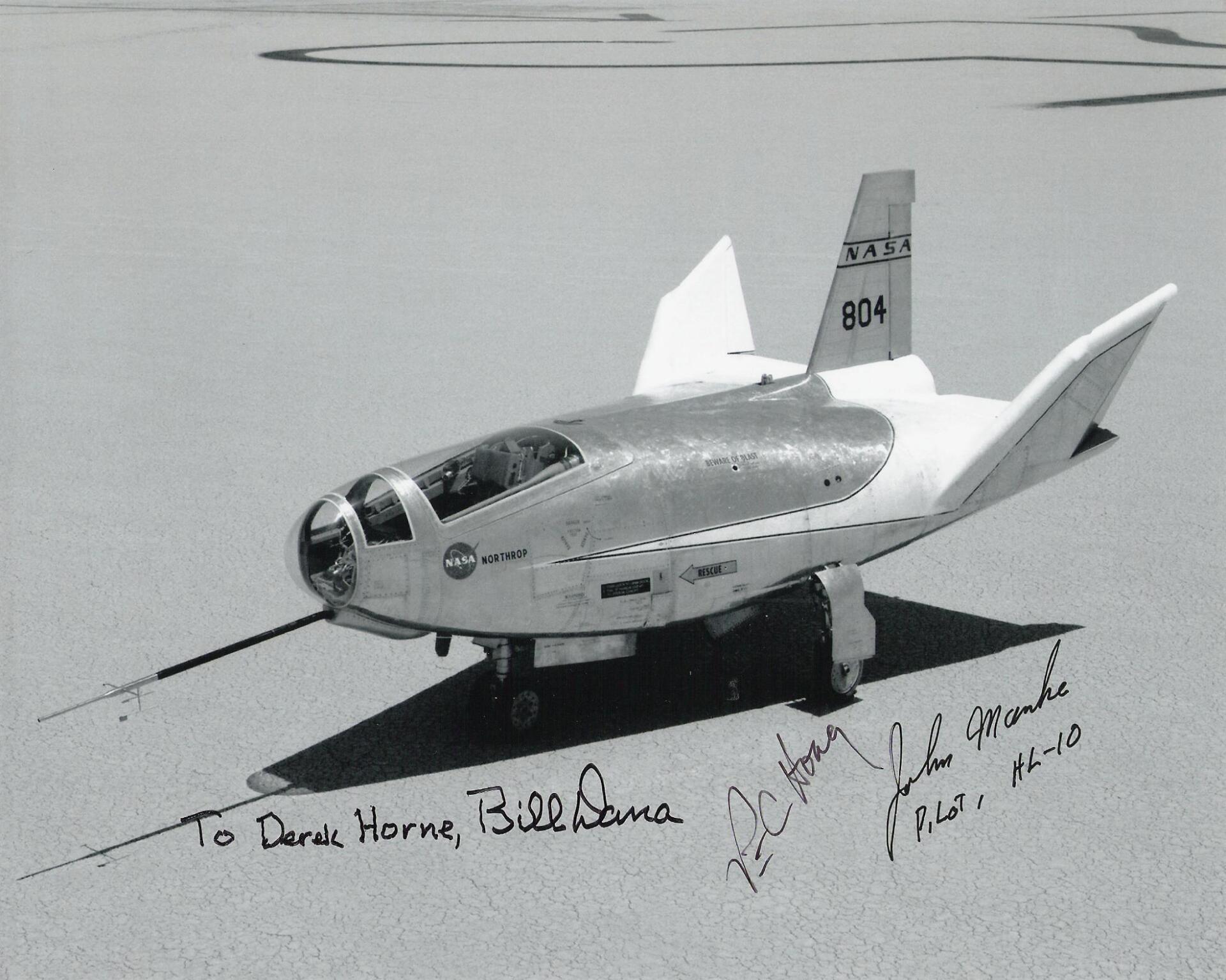
Slide title
HL-10 on the Dry Lakebed
Button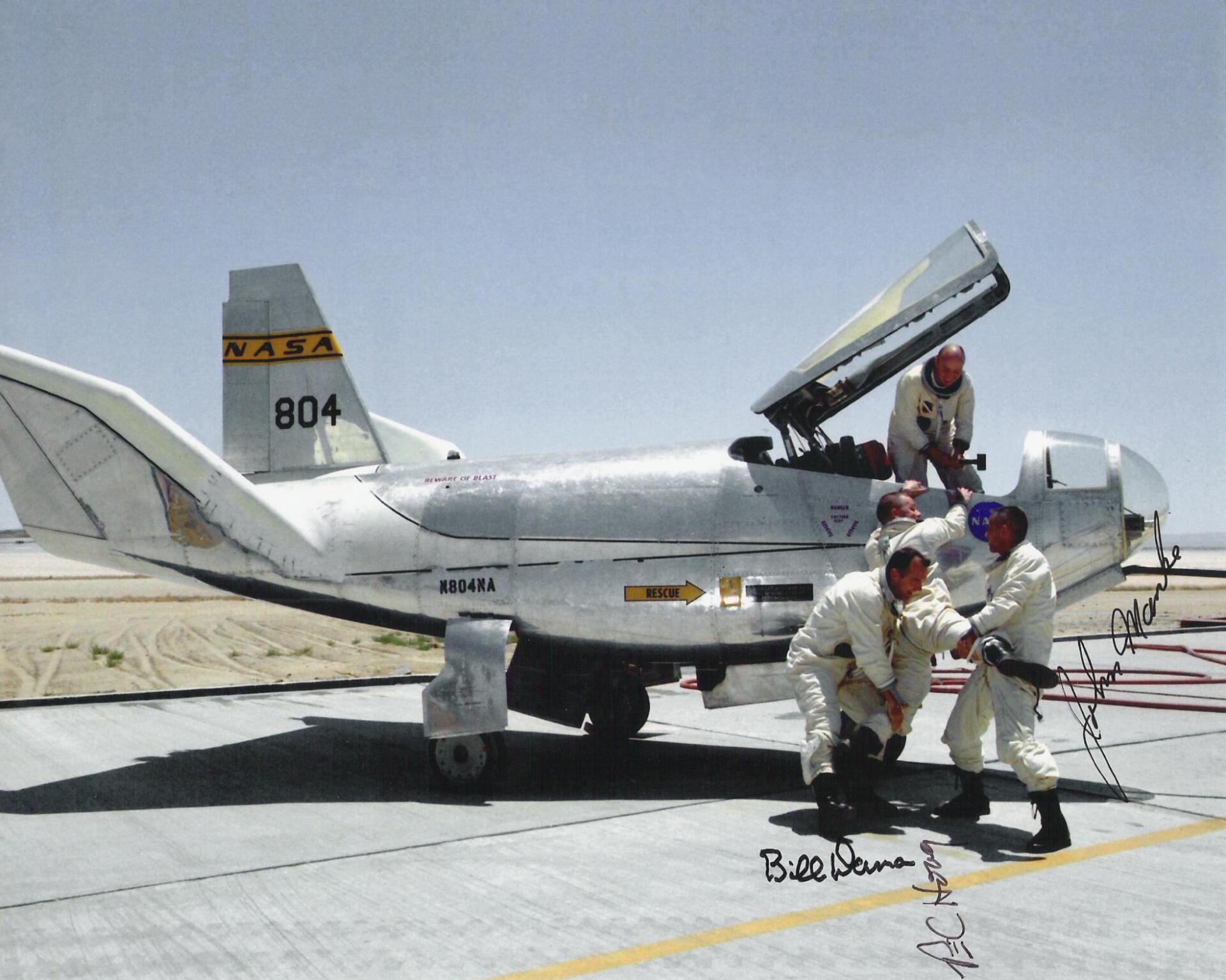
Slide title
HL-10 pilots Gentry, Dana, Manke & Hoag goof off!
Button
Slide title
Bill Dana with the X-24B
Button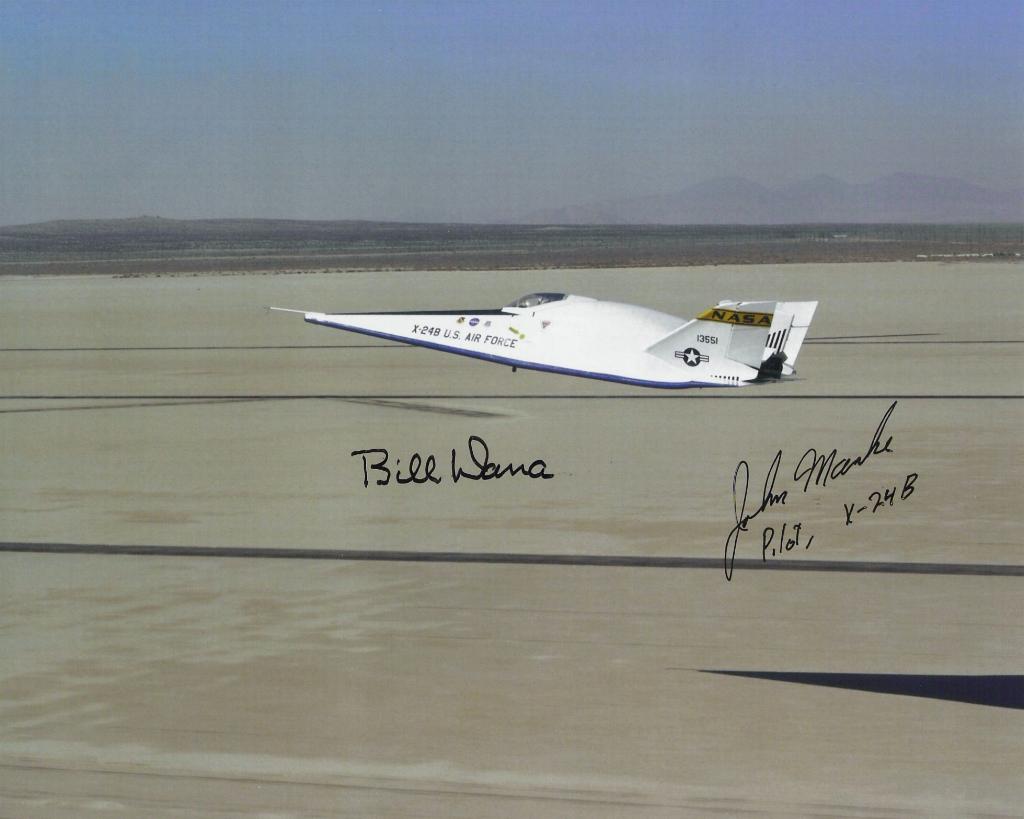
Slide title
X-24B coming into land
Button
Slide title
Commemorative cover flown by Joe Engle - Signed by 5 X-15 pilots
ButtonSlide title
35th Anniversary of Bill Dana's last X-15 flight
ButtonSlide title
I designed and had these 35th Anniversary covers cancelled at Edwards AFB - I gave some to Bill Dana
Button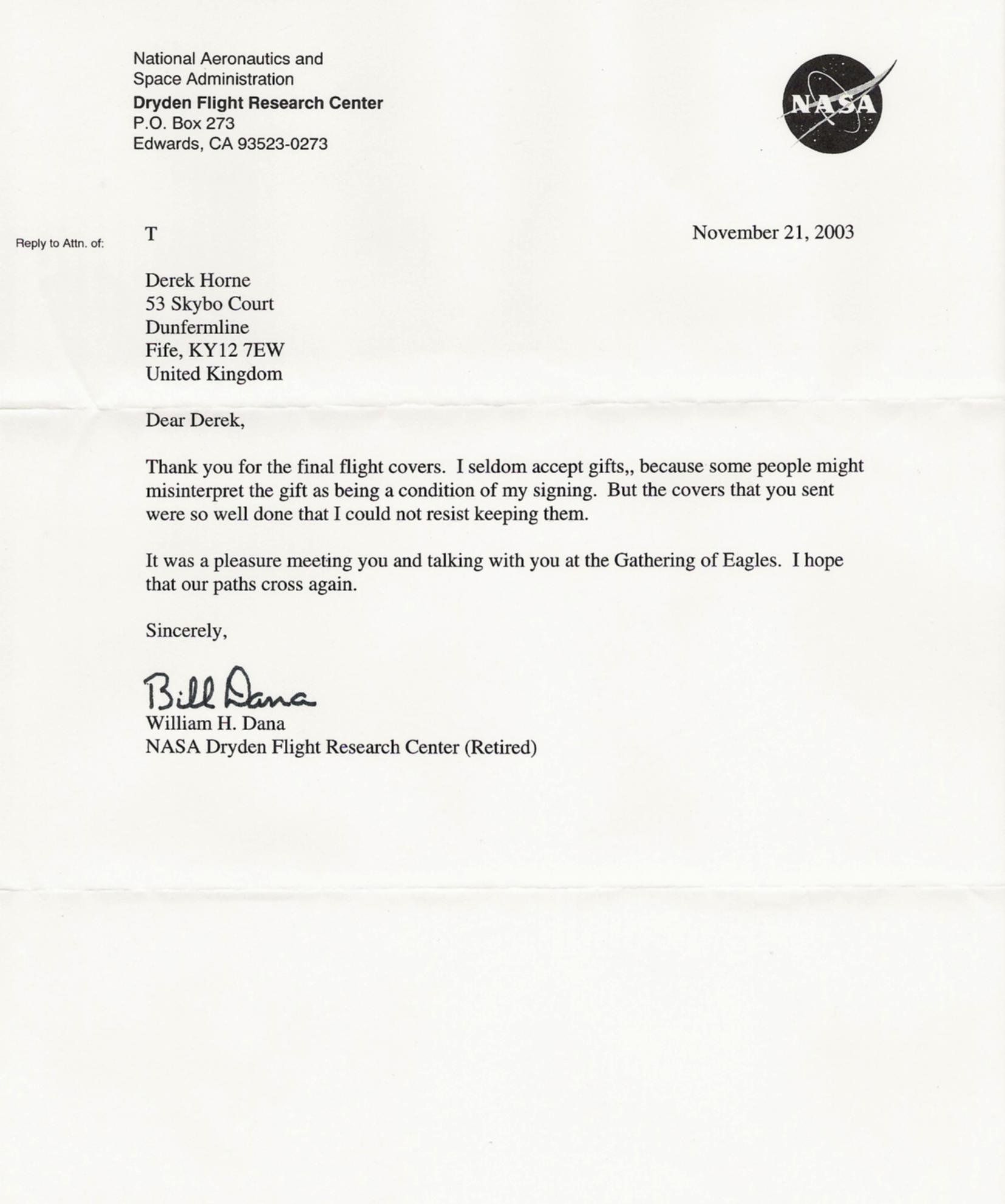
Slide title
Letter I received from Bill Dana upon his receipt of the covers
Button
Bill Dana graduated from the U.S. military Academy at West Point in 1952 and served four years in the U.S. Air Force. He joined NASA after earning a Master of Science degree in Aeronautical Engineering from USC in 1958. As a research pilot at NASA's Dryden Flight Research Center at Edwards AFB he was a project pilot on the rocket powered Hypersonic X-15 and flew it 16 times, reaching a top speed of 3,897 mph with a peak altitude of 310,000 feet (nearly 59 miles). Dana was the final pilot to fly the X-15 on its 199th free flight on October 24th, 1968. On this flight he reached a top speed of 3716mph (Mach 5.38) and peak altitude of 255,000 feet or 48 miles. Dana then began work as a project pilot on the Manned Lifting Body flight test program. Dana flew the M2-F1, M2-F2, Northrop HL-10 and the Martin-Marietta X-24B craft for 31 flights in all. These test programs produced critical data that helped in the design of the USA's Space Shuttle.
I had the honor and privelage of meeting Bill Dana at the 2003 Flight Test Historical Foundation's "Gathering of Eagles" in Lancaster, California. The GOE was held on 24th October 2003 which happened to be the 35th anniversary of Dana's last flight in the X-15. I designed a cachet which I had a run of printed and cancelled them at the Post Office at Edwards AFB on the 35th anniversary. I sent some of these covers to Bill for him to keep and give to his family. He sent me a touching letter thanking me which is in the above photo gallery. Bill Dana sadly died at age 83, passing away in Phoenix, Arizona from Parkinson's Disease.
Read Bill Dana's NASA Flight Research Center biography and his Wikipedia page to learn more about his career.
Einar K. Enevoldson - (1932-2021)
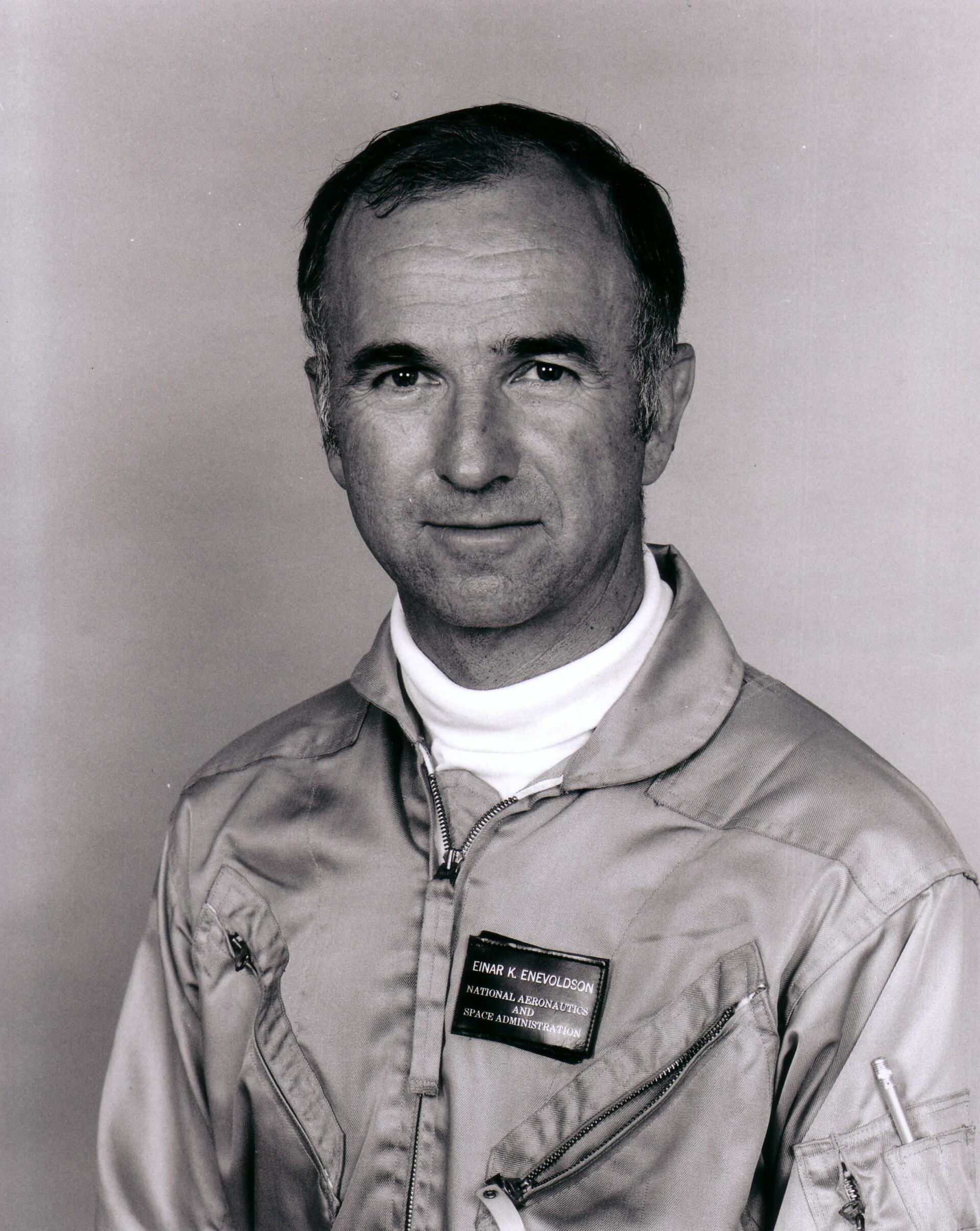
Slide title
Einar Enevoldson
Button
Slide title
Enevoldson with the X-24B
Button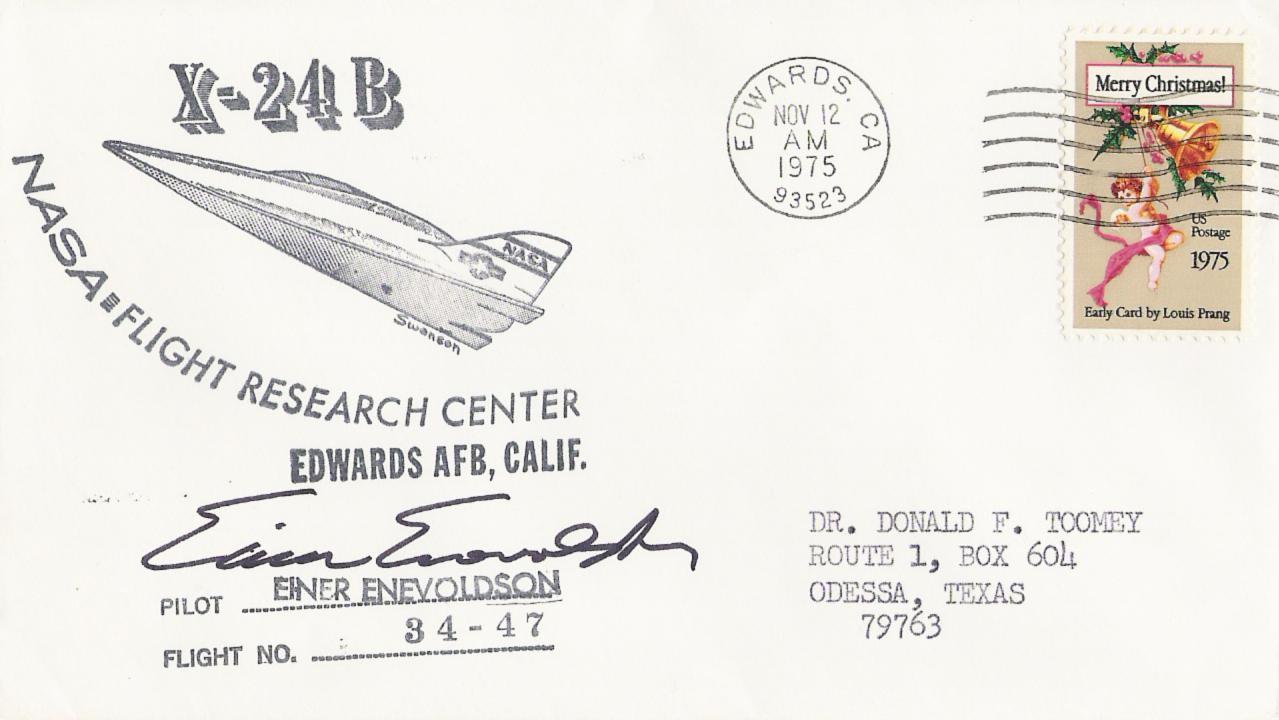
Slide title
X-24B Flight Cover
Button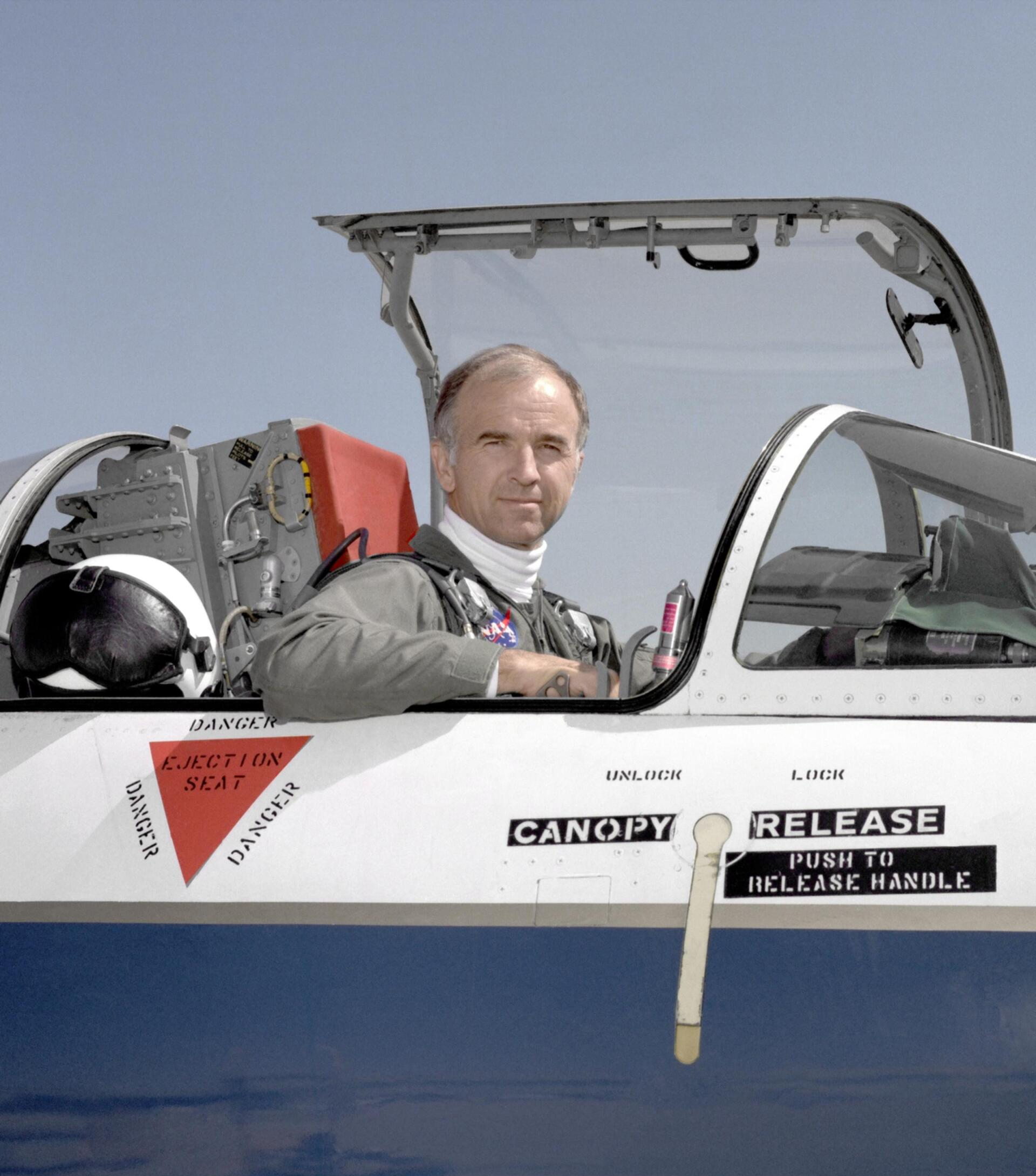
Slide title
In F-104 cockpit - Official NASA photograph (1984)
Button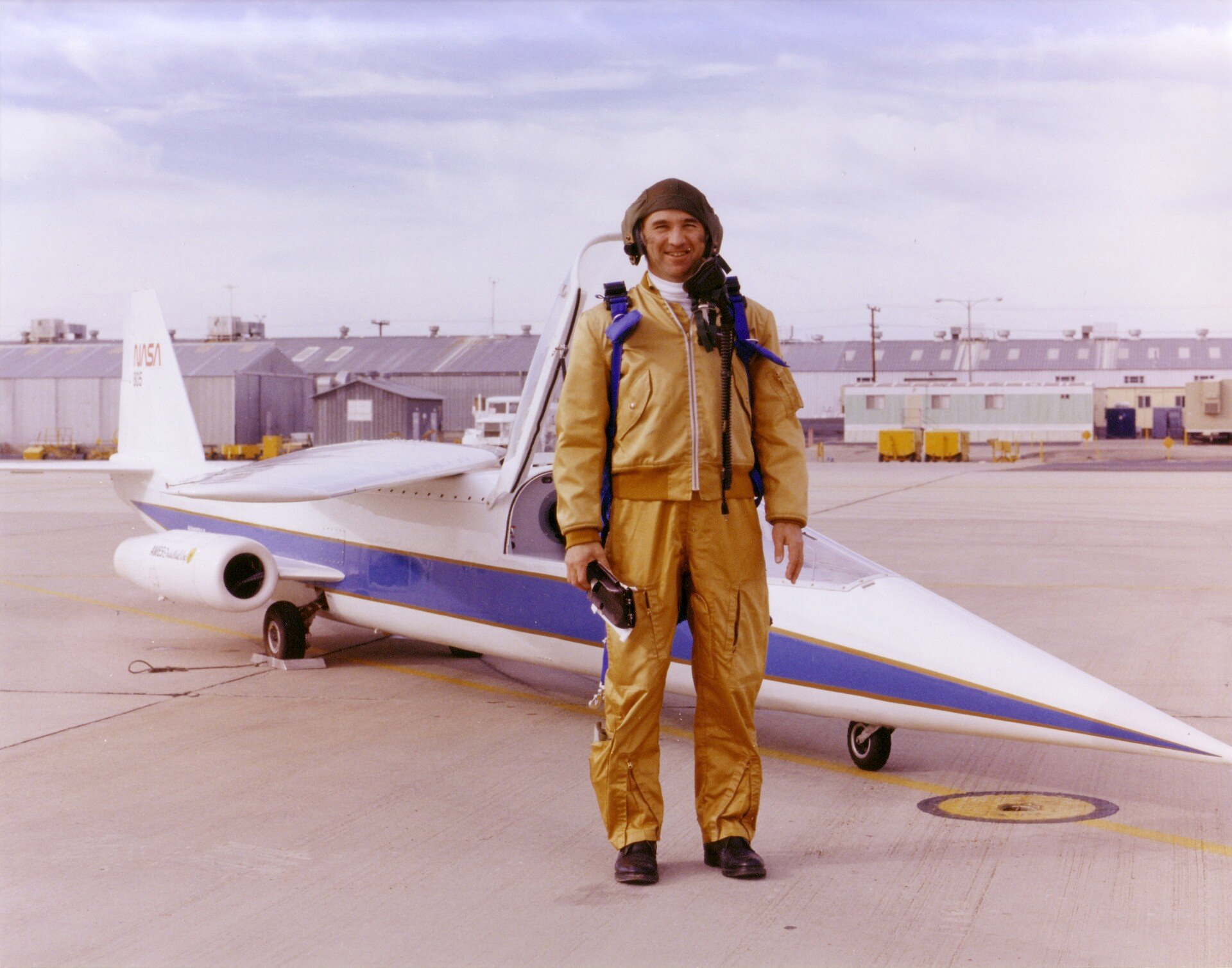
Slide title
Einar with the AD-1 Oblique Wing
Button
Born in Seattle, Washington on June 15, 1932, Enevoldson attended several colleges. He received his B.S. degree in Mechanical Engineering and his M.S. degree in Aeronautical Engineering from the University of Wyoming in 1963. Enevoldson was a jet fighter pilot in the USAF, and as an exchange officer with the Royal Air Force attended the Empire Test Pilot's School in Farnborough, England. Following graduation, he served as a test pilot on the Hunter, Lightning and Javelin British fighter aircraft from 1966 to 1967.
Einar Enevoldson was a civilian research pilot for the National Aeronautics and Space Administration's Hugh L. Dryden Flight Research Center, Edwards, California from 1968 until 1986.
Enevlodson was involved in many research programs, including those with experimental wings, propulsion and digital computer flight control systems. Among the NASA aircraft that he flew were the F-111, F-14, F-8 DFBW and SCW, YF-12A, the oblique wing AD-1, Controlled Deep Stall Sailplane, sub-scale F-15 RPV spin research vehicle and the X-24B Lifting Body. In 1974 Enevoldson was awarded the NASA Exceptional Service Medal, for his contributions as NASA Project Pilot on the F-111 Supercritical Wing Program and on the F-15 Remotely Piloted Research Vehicle. In 1980 he was awarded the NASA Exceptional Service Medal for contributions as project pilot on F-14 stall and spin resistance tests. Enevoldson retired from NASA in 1986. Einar Enevoldson sadly passed away on April 14th 2021, he was 88 years old.
MGEN Joe H. Engle - USAF ret.
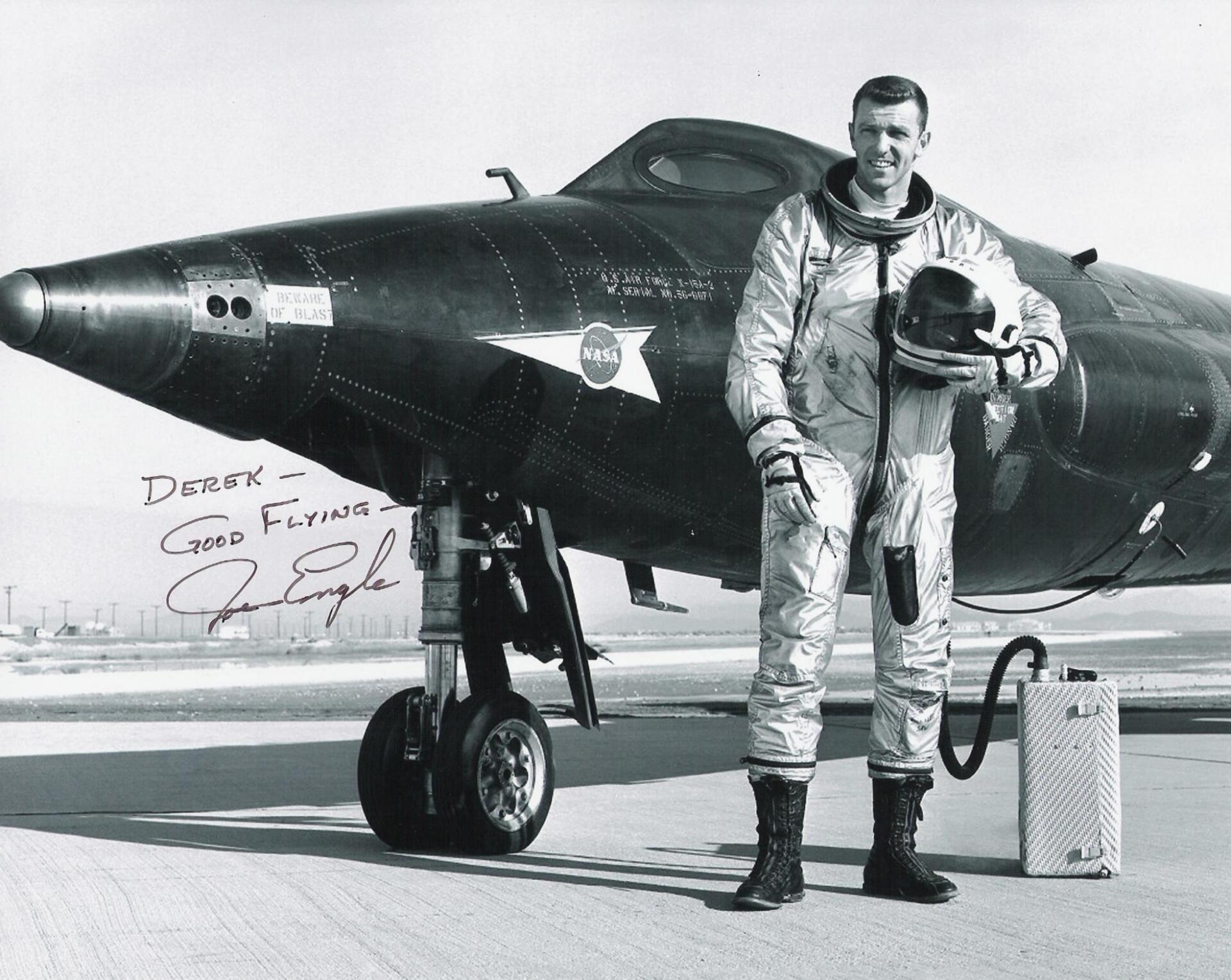
Slide title
Joe Engle with the X-15
Button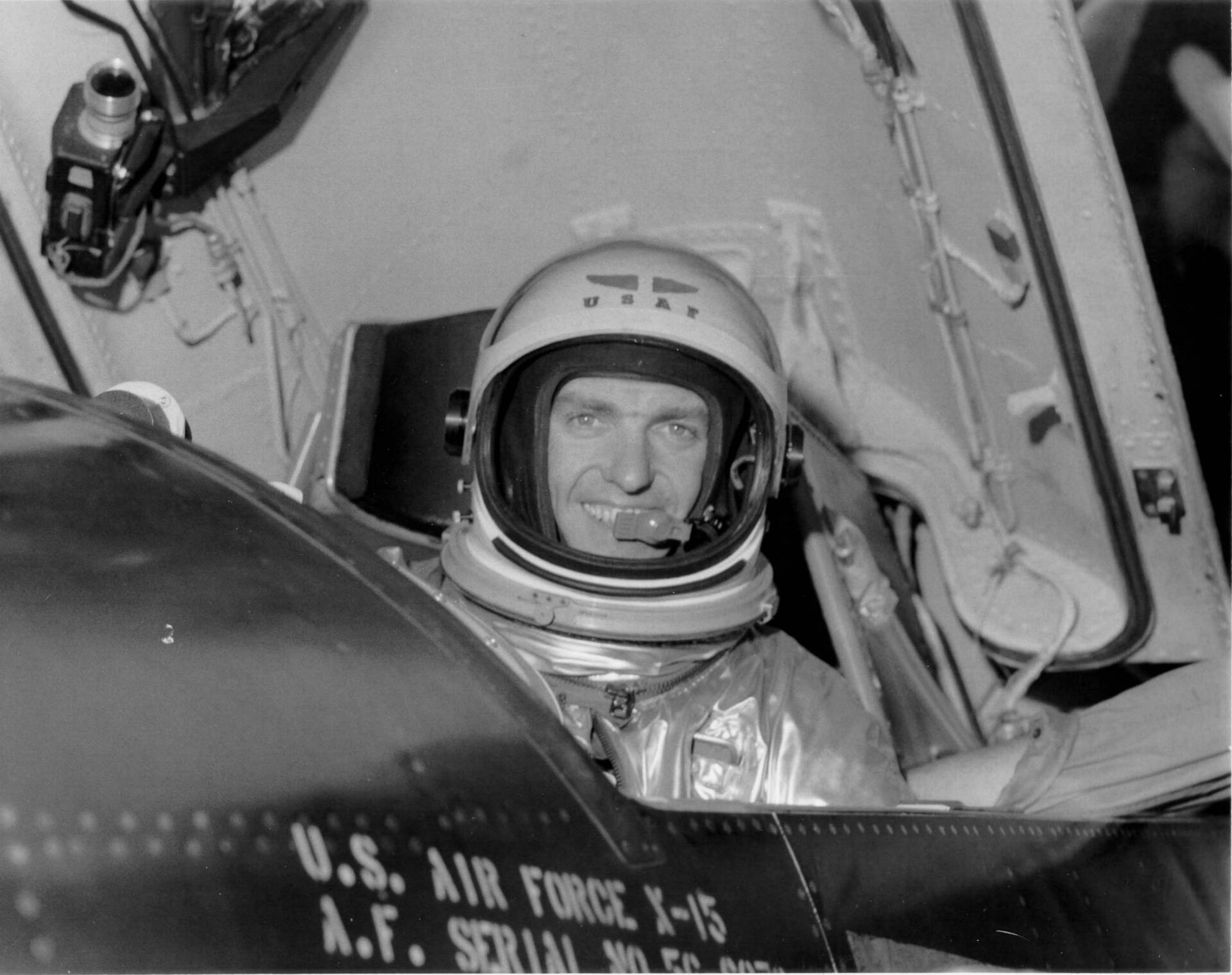
Slide title
Engle in X-15 cockpit
Button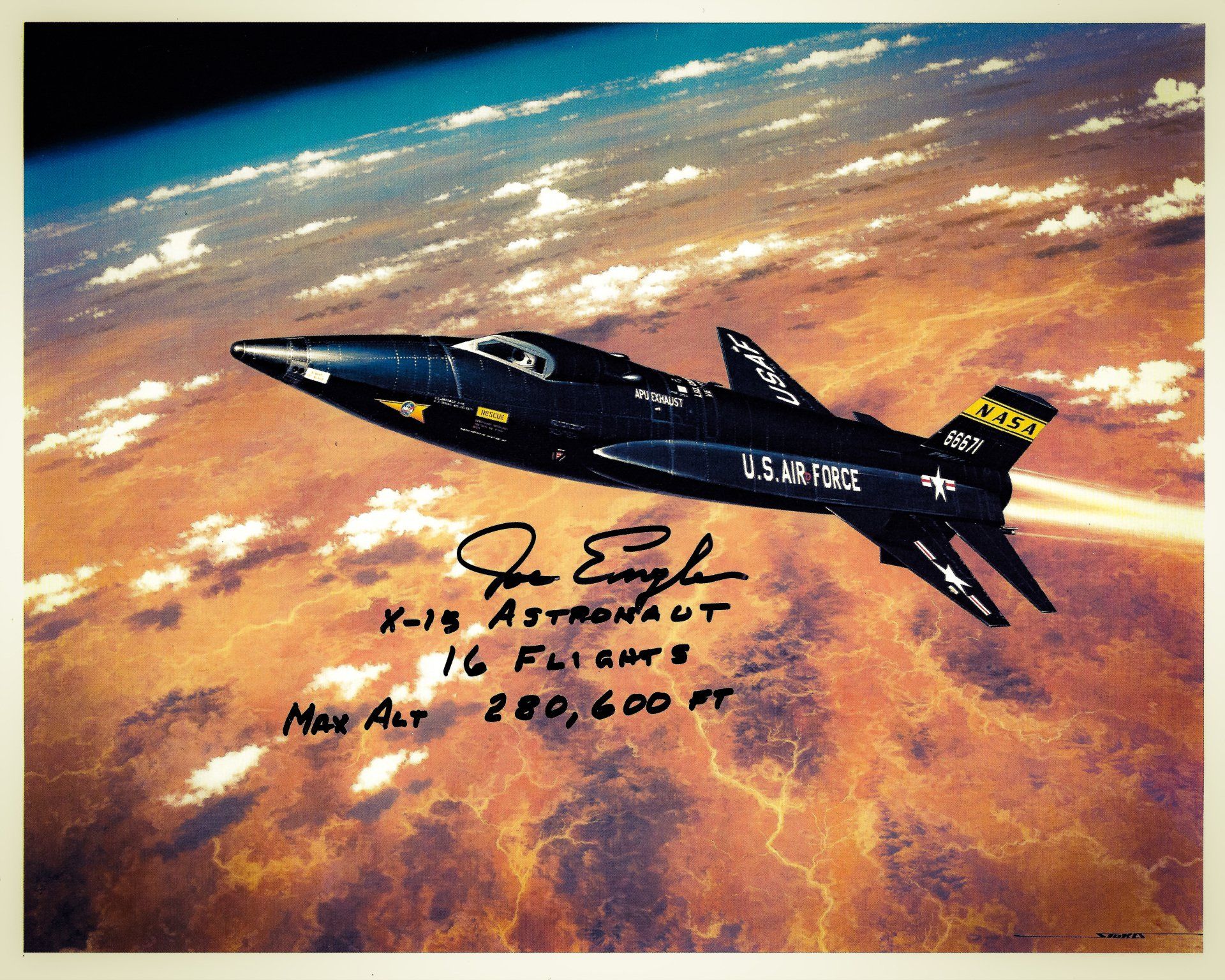
Slide title
Vintage NASA lithograph I had signed through Novaspace
Button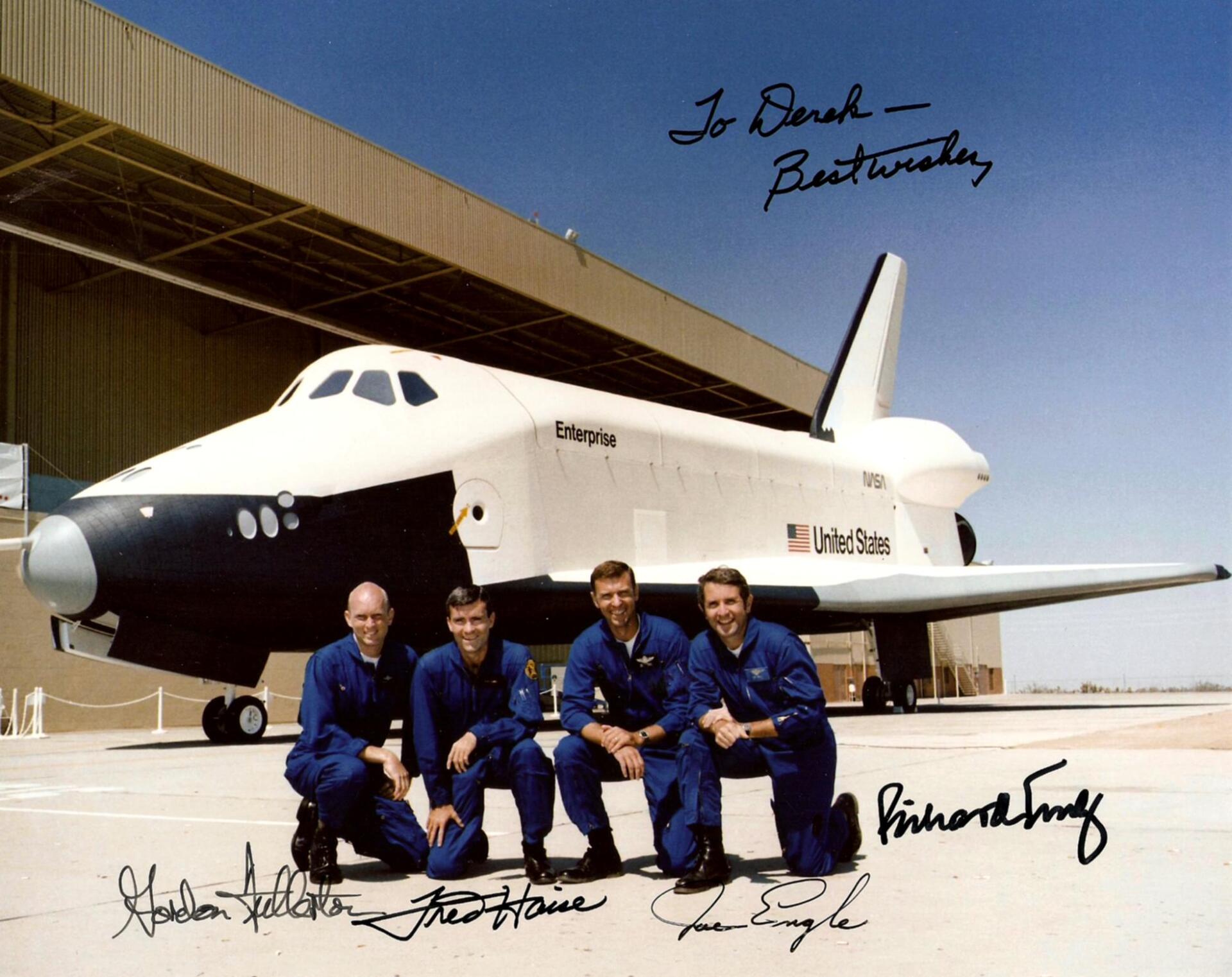
Slide title
Space Shuttle Enterprise ALT crews
Button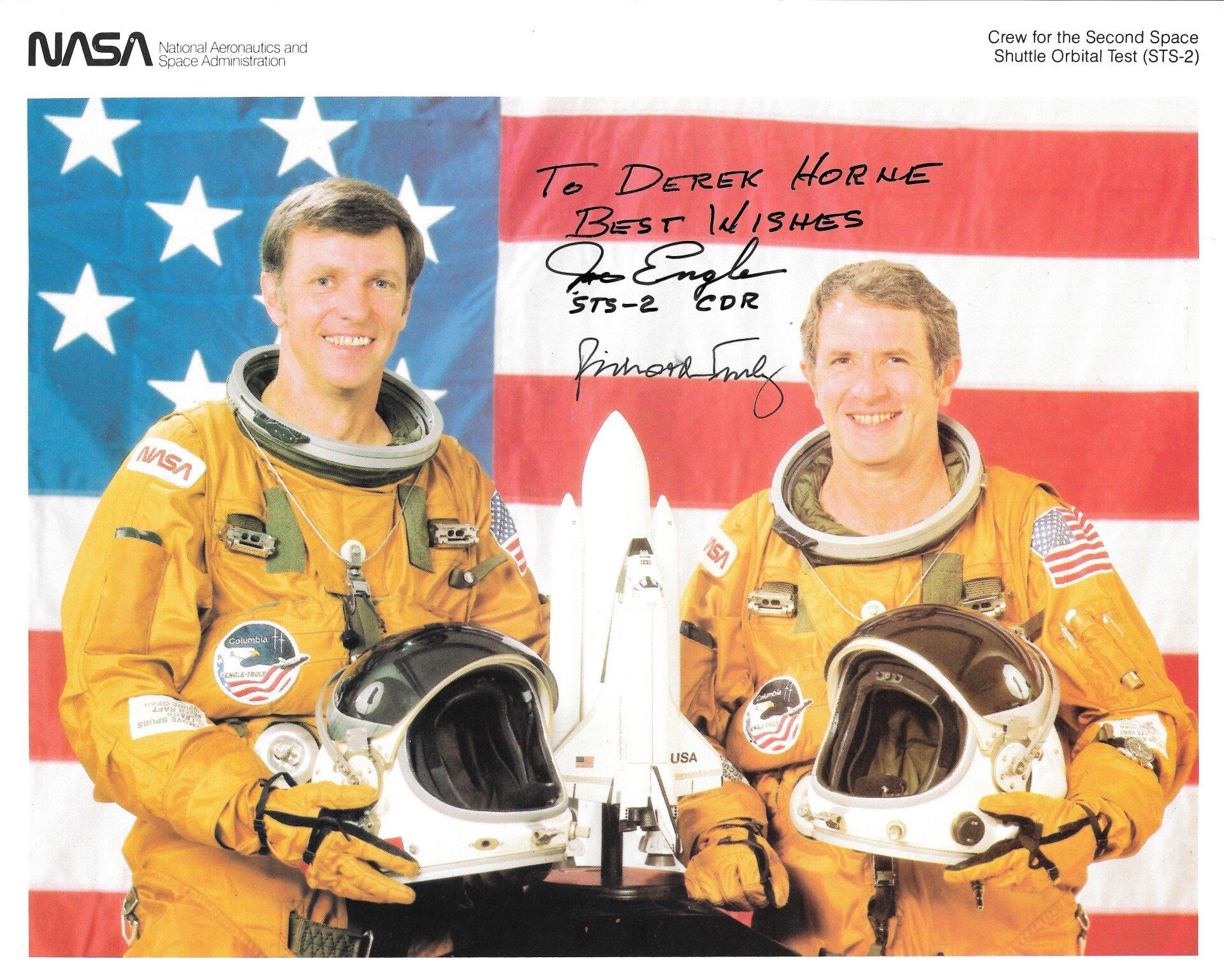
Slide title
STS-2 Crew signed litho
Button
Slide title
Anniversary cover flown at Mach 2 by General Engle signed by 5 X-15 pilots
Button
Slide title
The author with General Engle at the 2009 X-15 Gathering of Eagles in California
Button
Joe Engle was born in Abilene, Kansas on August 26th 1932 and attended the University of Kansas where he graduated with a degree in aeronautical engineering in 1955. Commissioned through the Air Force ROTC program, he earned his pilot's wings in 1958 and was assigned to fly F-100s for the 474th Fighter Day Squadron and, later, the 309th Tactical Fighter Squadron at George Air Force Base, California. Although in command of another squadron, then-Lt. Col. Chuck Yeager had frequent opportunities to fly with Engle — and against him in mock dogfights — and he was extremely impressed by the young fighter pilot's attitude and ability.
When Engle applied for admission to the U.S. Air Force Test Pilot School at Edwards AFB, Yeager recommended his selection. By the time he graduated from the school in 1962, Yeager had become the commandant and, because he considered Engle "one of the sharpest pilots in the program," he immediately selected him for admission to the new Aerospace Research Pilot School which was being established at Edwards to train military astronauts. He graduated from Aerospace Research Pilot School in 1963 and was selected as a project pilot for the X-15 program. He completed 16 flights in the rocket-powered hypersonic airplane, exceeding Mach 5 on 10 of those flights and attaining a top speed of Mach 5.71 (3,886 mph). In June 1965, he also climbed to an altitude of 280,600 feet, becoming one of only eight pilots — all from the X-15 program — who have qualified for astronaut's wings by flying an airplane into space. He went on to exceed the Air Force's 50-mile threshold for astronaut rating on two subsequent X-15 flights. At 32, he was the youngest man to become an astronaut and he remains the only "slick wing" pilot ever to achieve that status.
When NASA selected him as one of 19 new astronaut candidates in 1966, he was truly in an unusual position; he was the only one who had already engaged in spaceflight operations. First assigned to the Apollo program, he served on the support crew for Apollo X and then as backup lunar module pilot for Apollo XIV. He was selected as the Lunar Module Pilot for the Apollo XVII mission but was replaced by Geologist Harrison Schmitt when the following Apollo flights were cancelled (Apollo XVII turned out to be the final mission in the Apollo Lunar Program).
In 1977, he commanded one of two crews launched from atop a modified Boeing 747 in order to conduct approach and landing tests with the Space Shuttle Enterprise. Then in November 1981, he commanded the second flight of the Shuttle Columbia and manually flew the re-entry — performing 29 flight test manoeuvres — from Mach 25 through to landing roll out. This was the first and, so far, only time that a winged aerospace vehicle has been manually flown from orbit through landing.
He accumulated the last of his 224 hours in space when he commanded the Shuttle Discovery during STS-51-I in August 1985. Now retired from NASA, the Air Force and the Kansas Air National Guard, he currently serves as an engineering consultant and simulation evaluation pilot for Space Shuttle modifications and other advanced piloted re-entry vehicles. Engle holds the unique distinction of being the only astronaut to have flown two entirely different winged vehicles — the X-15 and the Space Shuttle — into space. He has flown more than 180 different aircraft types and logged nearly 14,000 flight hours.
His military decorations include the Department of Defence Distinguished Service Medal, U.S. Air Force Distinguished Service Medal and the Distinguished Flying Cross with Oak Leaf Cluster. Among his many honors, he has been awarded the NASA Distinguished Service Medal and Space Flight Medal, as well as the Harmon International, Collier, Lawrence Sperry, Iven C. Kincheloe, Robert H. Goddard and Thomas D. White aviation and space trophies. In 1992, he was inducted into the Aerospace Walk of Honor.

